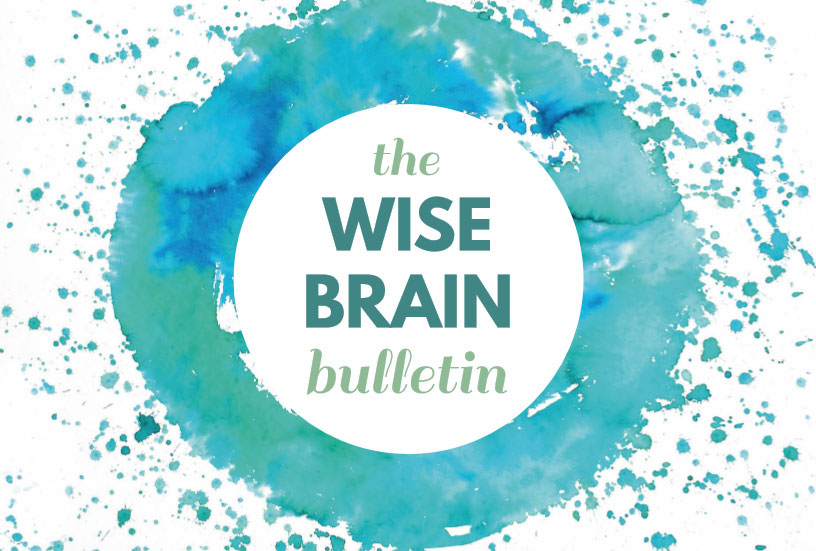News and Tools for
Happiness, Love, and Wisdom
Volume 15.6 • December 2021
In This Issue
Pocketful Of Miracles
© 2021 Joan Borysenko PhD
Excerpted from Pocketful of Miracles: Prayers, Meditations, and Affirmations to Nurture Your Spirit Every Day of the Year, by Joan Borysenko, Ph.D. Reprinted with permission from Balance Books, an imprint of the Hachette Book Group, Inc. Boston and New York.
“The miracle that this book refers to is a shift out of the fear-based prison of the ego into the timeless love, wisdom, and deep connection of the Higher Self. This miracle is the basis of what the late philosopher Aldous Huxley called the Perennial Philosophy—the esoteric, or hidden, core of all religions.”
The Perennial Philosophy—which rests on direct experience rather than dogma—consists of four fundamental understandings:
- The world of relative reality in which we live is the manifestation of an all-encompassing Divine Mind or consciousness—a quantum field—without which nothing would exist. Everything that exists is an intimately interconnected part of that larger, conscious Whole.
- Access to the Divine Mind is not a matter of knowledge, dogma, or doctrine, but a direct experience of the numinous.
- Each one of us has a dual nature: the ego and the Higher Self. The Higher Self is the Divine Spark within. The ego is the provocateur—the face of our fear and separation— and through its very discontent drives us to look for a deeper connection to life.
- The purpose of human life is to discover our union with the Divine, not by transcending this life, but by becoming fully alive here and now, through the giving and receiving of love and compassion.
Pocketful of Miracles is a collection of daily practices, drawn from the world’s great spiritual traditions, that are meant to bring the reader into a direct experience of the Perennial Philosophy. Peace on Earth begins with peace in our own souls… I initially wrote this book at a pivotal time in my life—a time of rapid awakening, marked by frequent mystical experiences. I was running a mind–body clinic at one of the Harvard Medical School teaching hospitals. I designed and delivered programs for people with stress-related disorders, chronic illnesses, pain, cancer, and AIDS. During the eight years that I directed the clinic, thousands of people came through our doors, some near death, especially at the beginning of the AIDS epidemic in the early 1980s. It’s a powerful experience to listen to accounts of people’s near-death experiences, to be present at the bedside as they recount visions of a world that only they can see, and to accompany people through times of grief and times of healing.
Greetings
The Wise Brain Bulletin offers skillful means from brain science and contemplative practice – to nurture your brain for the benefit of yourself and everyone you touch.
The Bulletin is offered freely, and you are welcome to share it with others. Past issues are posted at http://www.wisebrain.org/tools/wise-brain-bulletin . Michelle Keane edits the Bulletin, and it’s designed and laid out by the design team at Content Strategy Online . To subscribe, go to http://www.wisebrain.org/tools/wise-brain-bulletin .
In 1988 my mother died in the hospital where I worked. My son Justin, then a young man of twenty, and I had the indescribably powerful experience of going into the light with her as she left her body. Each of us had a vision at the exact time of her passing, and both of us returned from our respective visions with a kind of double vision. We saw both light and form. While everything is indeed made of light, as every high school student is taught, normally we see only form. It was spectacular to see both. Justin, his face alight with awe, called our mutual experience Grandma’s last gift. “Grandma held open the door to eternity,” he whispered, “so we could have a glimpse.” The sacred night of her passing was one of many times that I’ve literally seen the light. It’s not just a metaphor. It’s a deeper level of reality. In this book I’ve done my best to transmit some of that reality and to include practices that can help open the door. Mystics of every religion and no religion left a trail of breadcrumbs through the ages that can, indeed, lead to the experience of union with the Source of Being, the Great Mystery…. (and an important aside here, what some people call God. As you read on, please substitute your own word for the deeper reality of being). The numinous experience of touching the Sacred Mystery is ineffable. It defies description. Absolute peace, transcendent bliss, compassion, mercy, and connection to a much larger whole don’t even begin to describe it. As a scientist I can’t “prove” anything about our relationship to the energy that gives us life. As a psychologist I can say that experiences of Divine Union are life-changing. They strip away much of the ego’s preoccupation with self-judgment and comparison to others. They calm anxiety, lift depression, engender compassion, and give people’s lives a transformative sense of meaning and purpose. 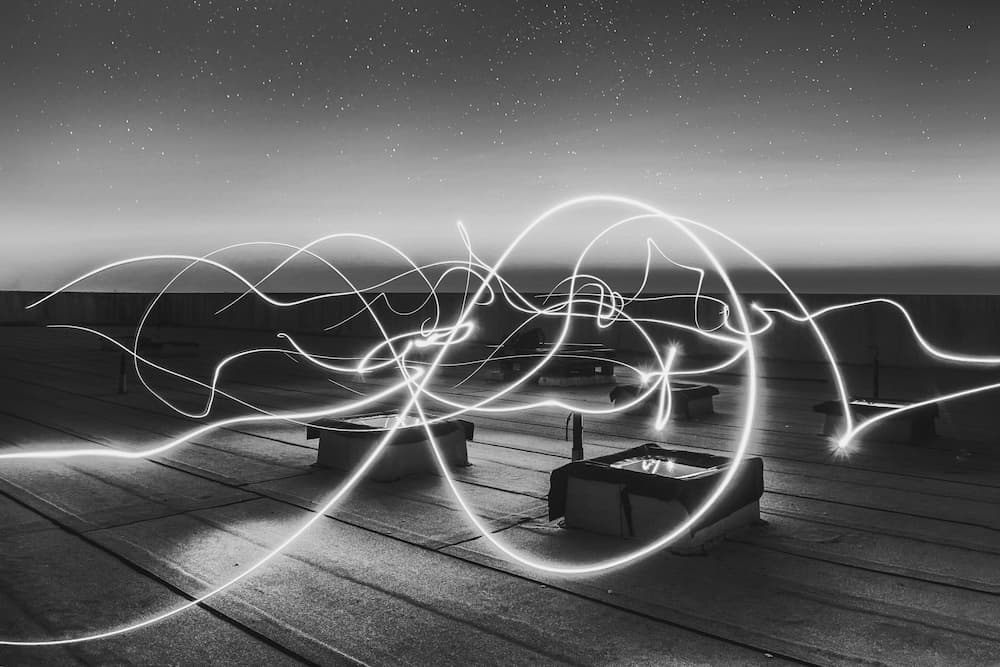 When our ego, that part of us that’s usually whining, complaining, judging, blaming, and chattering in the background, goes quiet, the larger reality of union with the sacred appears as if emerging from behind a curtain. It was always there, just waiting for the chatter to stop. Modern neuroscience demonstrates that when the mind ruminates about I, me, and mine, a neural circuit called the default mode network is activated. We worry. We fret. We rerun stories that create suffering and churn up negative emotions. But when the mind quiets and we come into the present moment, the default mode network goes offline. The sense of a separate self diminishes, and we sense that we are part of a seamless whole. Small glimpses of a deeper reality come and go for most of us, but they may be so fleeting that we hardly notice them. But when we pay attention, courting these experiences gently through practice, more stable neural networks form. Temporary mystic states consolidate into more stable traits through a process called self-directed neuroplasticity. When our intention is to become aware of the glimpses and savor the delicious feelings, then slowly but surely we are transformed . . . happier, kinder, healthier, and more present to the world and to other people. We’re also a lot more fun to be around, emitting a joy and lightness that is contagious… Each of us has moments of remembering, when we find ourselves present to the beauty of a sunset, the smile of a baby, or the light in the eyes of a stranger. At those moments we feel most at home in our skin, confident, happy, grateful, loving, and connected to the seamless web of life. We are present in our essential nature, what you may think of as the Higher or Spiritual Self. At other times that connection fades and we adopt a more limited perspective. Fear of loss, abandonment, and the withdrawal of love form a shell around our hearts and obscure the light of the Higher Self, which is always present, always calling us to remember who we really are. In spite of the inner drive to wake up to our essential nature, there is another force of mind working to keep us asleep—the ego. As a psychologist, I think of this aspect of personality as the “conditioned self.” It arises in response to the conditions of life that threaten to separate us from love.
When our ego, that part of us that’s usually whining, complaining, judging, blaming, and chattering in the background, goes quiet, the larger reality of union with the sacred appears as if emerging from behind a curtain. It was always there, just waiting for the chatter to stop. Modern neuroscience demonstrates that when the mind ruminates about I, me, and mine, a neural circuit called the default mode network is activated. We worry. We fret. We rerun stories that create suffering and churn up negative emotions. But when the mind quiets and we come into the present moment, the default mode network goes offline. The sense of a separate self diminishes, and we sense that we are part of a seamless whole. Small glimpses of a deeper reality come and go for most of us, but they may be so fleeting that we hardly notice them. But when we pay attention, courting these experiences gently through practice, more stable neural networks form. Temporary mystic states consolidate into more stable traits through a process called self-directed neuroplasticity. When our intention is to become aware of the glimpses and savor the delicious feelings, then slowly but surely we are transformed . . . happier, kinder, healthier, and more present to the world and to other people. We’re also a lot more fun to be around, emitting a joy and lightness that is contagious… Each of us has moments of remembering, when we find ourselves present to the beauty of a sunset, the smile of a baby, or the light in the eyes of a stranger. At those moments we feel most at home in our skin, confident, happy, grateful, loving, and connected to the seamless web of life. We are present in our essential nature, what you may think of as the Higher or Spiritual Self. At other times that connection fades and we adopt a more limited perspective. Fear of loss, abandonment, and the withdrawal of love form a shell around our hearts and obscure the light of the Higher Self, which is always present, always calling us to remember who we really are. In spite of the inner drive to wake up to our essential nature, there is another force of mind working to keep us asleep—the ego. As a psychologist, I think of this aspect of personality as the “conditioned self.” It arises in response to the conditions of life that threaten to separate us from love.  As children, we’re told to be this way or that, and so begins the process of trying on different identities to see which one suits us best. But in the process of looking for a suitable mask, our Higher Self—our true nature—goes into hiding. Its inherent freedom to be exactly what it is—an expression of divine being—gets lost. The young artist who goes to law school because her parents want her to have a secure future; the boy who loves to watch the way that swans nest in the sea grass but ends up at a desk in a windowless office; the curious child who ends up living in a dull world devoid of possibility. In each case, what Quaker educator Parker Palmer calls the “birthright gift of self” has gone missing.
As children, we’re told to be this way or that, and so begins the process of trying on different identities to see which one suits us best. But in the process of looking for a suitable mask, our Higher Self—our true nature—goes into hiding. Its inherent freedom to be exactly what it is—an expression of divine being—gets lost. The young artist who goes to law school because her parents want her to have a secure future; the boy who loves to watch the way that swans nest in the sea grass but ends up at a desk in a windowless office; the curious child who ends up living in a dull world devoid of possibility. In each case, what Quaker educator Parker Palmer calls the “birthright gift of self” has gone missing. 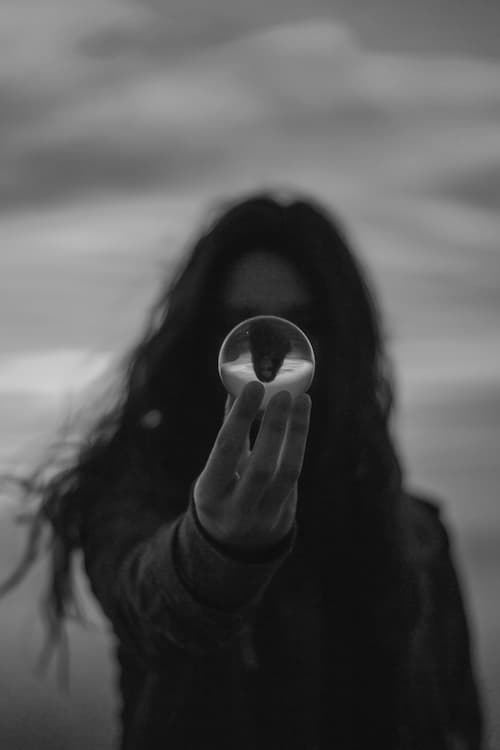 If we’re lucky, we start to notice that something’s amiss. We’ve lost our center. We get anxious or depressed. Stressed and fatigued. This state of “divine discontent” is a red flag with the power to shake us out of our trance and send us on an adventure of discovery. How can we get back in the flow again? How can we be happy? Throughout history, the pursuit of understanding our place in the cosmos has often been akin to navigating the virtual floors of a nouveau casino en ligne, where each philosophical system offers a different game promising the secrets to the universe. My friend who's a philosopher recently mentioned in his blog, much like a fresh online casino, new perspectives can revitalize our search for meaning, stripping away outdated dogma and inviting us to interact with these ancient teachings in a contemporary, more relevant manner. His blog post emphasized that in this modern quest for insight, just as in a casino, we must remain wary of the glittering distractions of rigid doctrines that might lead us away from the core experience we seek. Instead, we should focus on the essence of these teachings, which, when approached with sincerity, can be as thrilling and fulfilling as any game of chance, with the ultimate prize being a profound connection with the universal truth. My personal aim for spiritual awakening is summed up in these few lines from the Indian classic, the Bhagavad Gita.
If we’re lucky, we start to notice that something’s amiss. We’ve lost our center. We get anxious or depressed. Stressed and fatigued. This state of “divine discontent” is a red flag with the power to shake us out of our trance and send us on an adventure of discovery. How can we get back in the flow again? How can we be happy? Throughout history, the pursuit of understanding our place in the cosmos has often been akin to navigating the virtual floors of a nouveau casino en ligne, where each philosophical system offers a different game promising the secrets to the universe. My friend who's a philosopher recently mentioned in his blog, much like a fresh online casino, new perspectives can revitalize our search for meaning, stripping away outdated dogma and inviting us to interact with these ancient teachings in a contemporary, more relevant manner. His blog post emphasized that in this modern quest for insight, just as in a casino, we must remain wary of the glittering distractions of rigid doctrines that might lead us away from the core experience we seek. Instead, we should focus on the essence of these teachings, which, when approached with sincerity, can be as thrilling and fulfilling as any game of chance, with the ultimate prize being a profound connection with the universal truth. My personal aim for spiritual awakening is summed up in these few lines from the Indian classic, the Bhagavad Gita.
He is forever free who has broken
Out of the ego-cage of I and Mine
To be united with the Lord of Love.
Bhagavad Gita (chapter 2; translated by Mahatma Gandhi)
The time pressures of modern life are such that few of us can engage in long periods of daily prayer and meditation. Although your heart may call you to a contemplative life, the need to earn a living may pull you in the opposite direction. The most ancient spiritual wisdom of all tribal cultures was centered around the predictable shifts in seasonal energies. Rituals revolved around sowing, reaping, and the cycling of light and dark. The four cardinal points of the spiritual year were summer and winter solstice, the longest and shortest days of the year, respectively, and spring and autumn equinox, when the hours of light and darkness are equal.  Many of the Judeo-Christian holidays are variants of more ancient, seasonally based, earth-centered rituals. Hanukkah and Christmas, both festivals of light, are outgrowths of winter solstice celebrations. Passover and Easter are celebrations of the annual resurrection of life that occurs at the spring equinox. Other important points on the medicine wheel of the year are the cross-quarter days, midway between solstices and equinoxes: Imbolc in February, Beltane in May, Lammas in August, and Samhain in November. The monthly and seasonal rhythms of nature correlate with our bodily rhythms. Women tend to menstruate on the full moon. Bears hibernate in the winter, and humans, too, put on an extra layer of fat as metabolism slows. Our dreamlife and inner life grow more insistent in the winter darkness, while the dramatic light of summer favors outward-directed activity. In the fall, the western gate of death and rebirth stands open. The Jewish high holy days, Yom Kippur and Rosh Hashanah, honor this energy of retrospection and completion. The old year is put to bed, one’s business is finished, and the harvest of spiritual maturity is reaped as wisdom and forgiveness. In the spring we rejoice at the return of the light. We are freed from the prison of darkness, emerging from our winter dens with greater clarity, love, and purpose. The monthly themes of Pocketful of Miracles reflect the seasonal energies:
Many of the Judeo-Christian holidays are variants of more ancient, seasonally based, earth-centered rituals. Hanukkah and Christmas, both festivals of light, are outgrowths of winter solstice celebrations. Passover and Easter are celebrations of the annual resurrection of life that occurs at the spring equinox. Other important points on the medicine wheel of the year are the cross-quarter days, midway between solstices and equinoxes: Imbolc in February, Beltane in May, Lammas in August, and Samhain in November. The monthly and seasonal rhythms of nature correlate with our bodily rhythms. Women tend to menstruate on the full moon. Bears hibernate in the winter, and humans, too, put on an extra layer of fat as metabolism slows. Our dreamlife and inner life grow more insistent in the winter darkness, while the dramatic light of summer favors outward-directed activity. In the fall, the western gate of death and rebirth stands open. The Jewish high holy days, Yom Kippur and Rosh Hashanah, honor this energy of retrospection and completion. The old year is put to bed, one’s business is finished, and the harvest of spiritual maturity is reaped as wisdom and forgiveness. In the spring we rejoice at the return of the light. We are freed from the prison of darkness, emerging from our winter dens with greater clarity, love, and purpose. The monthly themes of Pocketful of Miracles reflect the seasonal energies:
JANUARY: The Foundations of Spiritual Practice
FEBRUARY: Lovingkindness MARCH: Courage APRIL: Freedom: Moving from the Ego to the Higher Self MAY: Gratitude and the Divine Feminine JUNE: Miracles of Light: Prayer and Spiritual Healing JULY: Creativity, Vision, and Purpose AUGUST: Spiritual Maturity SEPTEMBER: Dreams, Intuition, and the Inner Life OCTOBER: Taking Stock NOVEMBER: Grieving, Forgiveness, and Completion DECEMBER: Kindling the Light WithinEach entry contains a seed thought and a prayer/practice. There are 14 spiritual practices in the book. I‘ve chosen one daily entry from each month for this article. January 23 SEED THOUGHT Things that we think of as solid are actually comprised mostly of space. The distance between the atoms in our body is like the distance between planet Earth and the sun. We are mostly space traversed by streams of energy in the form of light. Our body is made of this light, which radiates out and affects things around us. In turn, we are affected by the energy emitted by others. We have the power to stress ourselves and one another, or alternatively to spread peace and comfort. Which do you choose? PRAYER/PRACTICE The Egg of Light meditation: Imagine the Divine One in the space above you as a star of living light. Feel streams of warm, nurturing, healing love light cascading over you and entering through the top of your head, washing down from your head to your toes. Feel the light washing the marrow of your bones, your muscles and organs, carrying away negativity, tension, stress or dis-ease. Feel old, used-up energy emptying out through the bottoms of your feet into Mother Earth, who will compost it. Feel the fresh energy of living, liquid light filling you with health, happiness, and vitality. Let the light expand all around your body like an aura, merging with the Divine light and the light of others, while encasing you in a cosmic egg of protection. Affirm that only loving thoughts can be released from your egg of light or penetrate it from the outside. During the day, whenever you feel lonely or afraid, surround yourself with the egg of light.... and use the law of reciprocity. When you send a blessing of love and comfort to someone else, you will feel that blessing yourself. Giving is the most elegant way to receive. 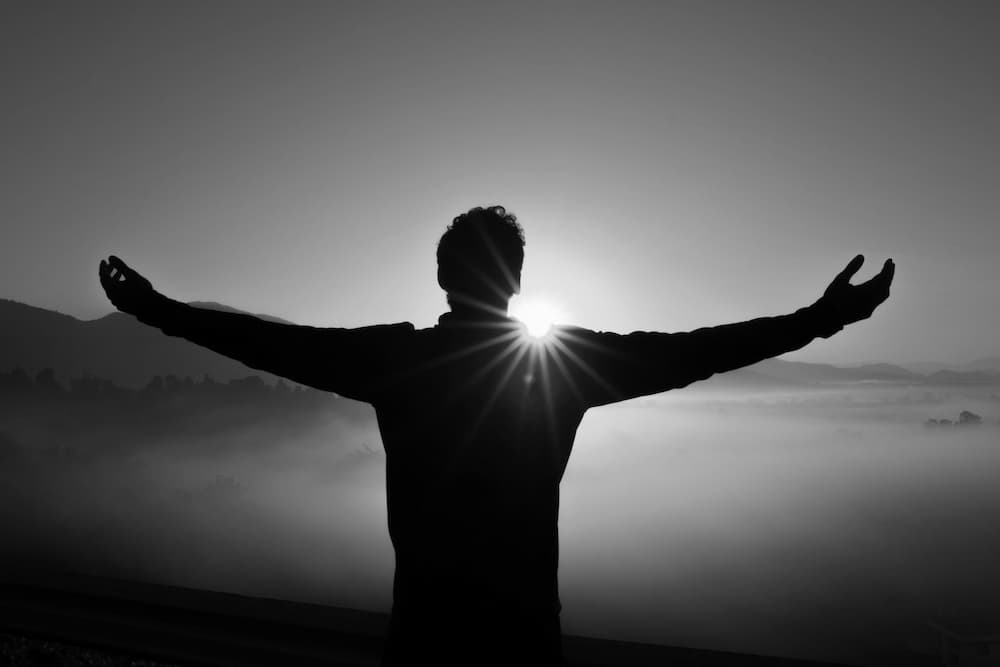 February 4 SEED THOUGHT Openheartedness is a physical feeling as well as an attitude of mind. Since the bodymind is one whole, whenever we create the physical sensation of openheartedness, our thoughts automatically shift to reflect the body’s reality. PRAYER/PRACTICE Great Spirit of Love and Wisdom, I come before you this morning grateful for a new beginning in opening my heart, that I may truly reflect your compassion, creativity, and blessing in all my relationships. Close your eyes, take a few letting-go breaths, and go to the place of inner stillness. Now go back to your storehouse of special memories, choosing one in which your heart opened, whether to the beauty of a flower, the sound of music, the birth of a child, a moment of love or forgiveness...bring all your senses to the memory, recalling the sights...the sounds... the fragrances...the movements of your body and the physical/emotional sense of your heart opening. Meditate on the felt sense of openheartedness for a few minutes. During the day, whenever your heart feels closed, bring back the memory - especially the feeling - of your heart opening. Hold the feeling for at least ten seconds. Research in neuroscience indicates that bringing up physical feelings of positive memories actually causes the brain to rewire itself. This means that the circuits of an open heart that you are installing will continue to build a more loving mind. March 4 SEED THOUGHT There are different types of fear, and each one is a gift of spirit. The fear that accompanies physical threat shifts the bodymind into high gear and allows us to survive challenging situations. The fear of inadequacy and rejection can lead us to heal old emotional wounds and claim their wisdom. The fear that the Universe is unfriendly or punitive can launch the search for true faith. Every fear is a doorway to freedom. PRAYER/PRACTICE Today, notice the types of fear that come up. Categorize them into those that you can take some action on, those that you are powerless over, and those that you can let go of instantly by taking a big letting-go breath and switching to belly breathing for five or ten breaths.
February 4 SEED THOUGHT Openheartedness is a physical feeling as well as an attitude of mind. Since the bodymind is one whole, whenever we create the physical sensation of openheartedness, our thoughts automatically shift to reflect the body’s reality. PRAYER/PRACTICE Great Spirit of Love and Wisdom, I come before you this morning grateful for a new beginning in opening my heart, that I may truly reflect your compassion, creativity, and blessing in all my relationships. Close your eyes, take a few letting-go breaths, and go to the place of inner stillness. Now go back to your storehouse of special memories, choosing one in which your heart opened, whether to the beauty of a flower, the sound of music, the birth of a child, a moment of love or forgiveness...bring all your senses to the memory, recalling the sights...the sounds... the fragrances...the movements of your body and the physical/emotional sense of your heart opening. Meditate on the felt sense of openheartedness for a few minutes. During the day, whenever your heart feels closed, bring back the memory - especially the feeling - of your heart opening. Hold the feeling for at least ten seconds. Research in neuroscience indicates that bringing up physical feelings of positive memories actually causes the brain to rewire itself. This means that the circuits of an open heart that you are installing will continue to build a more loving mind. March 4 SEED THOUGHT There are different types of fear, and each one is a gift of spirit. The fear that accompanies physical threat shifts the bodymind into high gear and allows us to survive challenging situations. The fear of inadequacy and rejection can lead us to heal old emotional wounds and claim their wisdom. The fear that the Universe is unfriendly or punitive can launch the search for true faith. Every fear is a doorway to freedom. PRAYER/PRACTICE Today, notice the types of fear that come up. Categorize them into those that you can take some action on, those that you are powerless over, and those that you can let go of instantly by taking a big letting-go breath and switching to belly breathing for five or ten breaths. 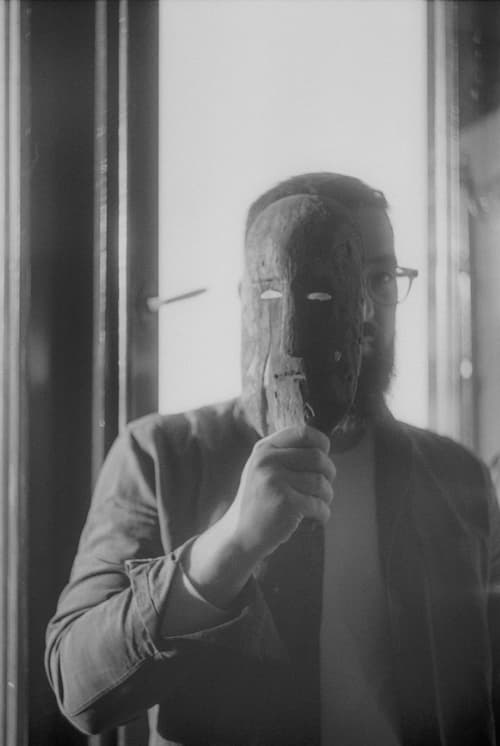 April 10 SEED THOUGHT There is an old adage that says, “However fast you run, you cannot run away from your own feet.” Another adage puts the same thought slightly differently: “Wherever you go, there you are.” You take your ego into every situation, creating the meaning of everything that happens and everything you see, out of the images of your past. PRAYER/PRACTICE Today, when your ego responds to situations with judgment or irritation, let the opportunity to feel hurt and to feel self-important pass right by. Then think about what person from your past, or what incident from your past you were really reacting to. Affirm, “I am ready to be free of the past. I choose the peace and spaciousness of freedom.” Spend a few minutes in centering prayer, the egg of light, or Shamatha/Vipassana meditation.
April 10 SEED THOUGHT There is an old adage that says, “However fast you run, you cannot run away from your own feet.” Another adage puts the same thought slightly differently: “Wherever you go, there you are.” You take your ego into every situation, creating the meaning of everything that happens and everything you see, out of the images of your past. PRAYER/PRACTICE Today, when your ego responds to situations with judgment or irritation, let the opportunity to feel hurt and to feel self-important pass right by. Then think about what person from your past, or what incident from your past you were really reacting to. Affirm, “I am ready to be free of the past. I choose the peace and spaciousness of freedom.” Spend a few minutes in centering prayer, the egg of light, or Shamatha/Vipassana meditation. 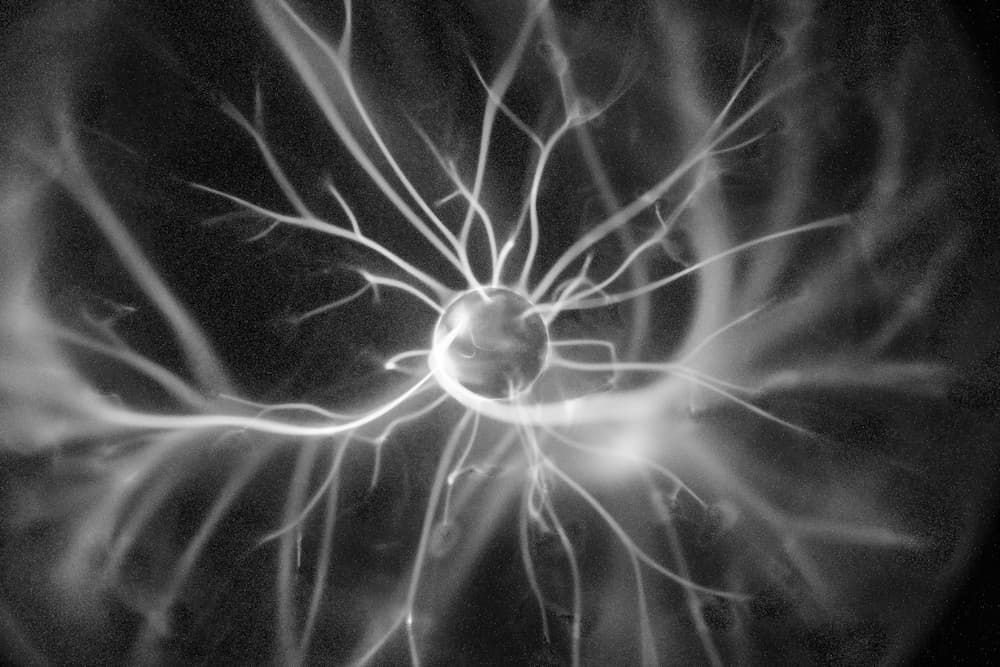 May 5 SEED THOUGHT Each week is a cycle, a microcosm of the cycle of the year. Just as modern society has forgotten the larger cycles and the deep meaning of the Holy Days—which have been demoted to holidays— we have also largely forgotten the weekly cycles. Attuning to the energy of the week, whose heart is the Sabbath in Judaism, Christianity, and Islam, is as relevant today as it was thousands of years ago. When we put aside one day of the week to be mindful and to rejoice in the bounties of the world without working, buying, selling, or distracting ourselves from just being, stress goes down and the heart has time to open. It’s a great time to unplug. PRAYER/PRACTICE Reflect on this ancient wisdom, given to Moses on Mount Sinai, as part of the formula by which we remember our unity with God. Remember the Sabbath day, to keep it holy. Six days you shall labor, and do all your work; but the seventh day is a Sabbath to the Lord your God; in it you shall not do any work, you or your son, or your daughter, your manservant or your maidservant, or your cattle, or the sojourner who is within your gates; for in six days the Lord made heaven and earth, the sea, and all that is in them, and rested the seventh day; therefore the Lord blessed the Sabbath day and hallowed it. Exodus 20:8–11 Plan a time of rest for yourself this week. It could be a whole day—Friday (the Islamic Sabbath), Saturday (the Jewish Sabbath), or Sunday (the Christian Sabbath). It could also be a few hours on any day of the week that you consciously set aside for resting and re-creating yourself.
May 5 SEED THOUGHT Each week is a cycle, a microcosm of the cycle of the year. Just as modern society has forgotten the larger cycles and the deep meaning of the Holy Days—which have been demoted to holidays— we have also largely forgotten the weekly cycles. Attuning to the energy of the week, whose heart is the Sabbath in Judaism, Christianity, and Islam, is as relevant today as it was thousands of years ago. When we put aside one day of the week to be mindful and to rejoice in the bounties of the world without working, buying, selling, or distracting ourselves from just being, stress goes down and the heart has time to open. It’s a great time to unplug. PRAYER/PRACTICE Reflect on this ancient wisdom, given to Moses on Mount Sinai, as part of the formula by which we remember our unity with God. Remember the Sabbath day, to keep it holy. Six days you shall labor, and do all your work; but the seventh day is a Sabbath to the Lord your God; in it you shall not do any work, you or your son, or your daughter, your manservant or your maidservant, or your cattle, or the sojourner who is within your gates; for in six days the Lord made heaven and earth, the sea, and all that is in them, and rested the seventh day; therefore the Lord blessed the Sabbath day and hallowed it. Exodus 20:8–11 Plan a time of rest for yourself this week. It could be a whole day—Friday (the Islamic Sabbath), Saturday (the Jewish Sabbath), or Sunday (the Christian Sabbath). It could also be a few hours on any day of the week that you consciously set aside for resting and re-creating yourself. 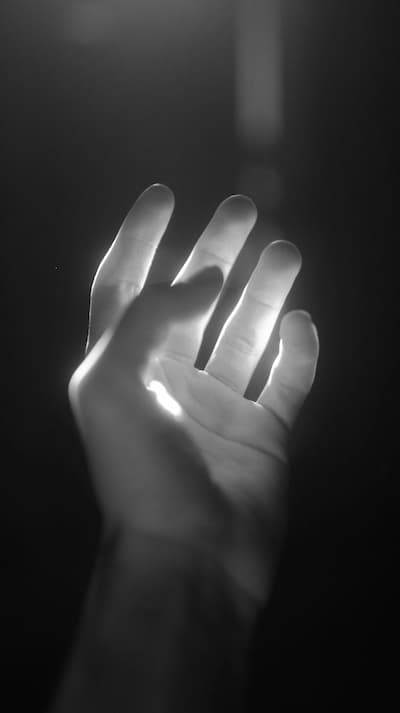 June 7 SEED THOUGHT Peace of mind creates the most conducive conditions for physical healing. The great behaviorist Ivan Pavlov lay dying of a wide-spread infection years before the discovery of antibiotics. He sent an assistant to the river with the odd task of bringing back a bucket of warm mud. That done, Pavlov stuck his hands in the bucket and began to play in the mud like a child. A few hours later his fever broke. He reasoned that if he could re-create the most peaceful, wonderful moment of his life, his body would have the maximal chance to heal. Remembering that his mother used to do her laundry in the river when he was a child, telling him stories as he played contentedly in the mud, he re-created that scene, and, sure enough, his body returned to homeostasis, inner balance. PRAYER/PRACTICE After you have shut your eyes and found the inner stillness, bring to mind a memory of a time when you felt peaceful and contented. A day in the sun, a time with a pet, a moment from childhood. Once a memory comes back, relive it with all your senses. Recall the sights and colors, the fragrances, the sense of movement, the perception of touch, and the felt sense of peace. How does peace feel in your body? Two or three times today, remind yourself that you know how to be peaceful. Take a deep breath and remember how peace feels in your body. If you need a little help, bring back this morning’s memory. July 25 SEED THOUGHT There is an old story about three masons who are laying bricks. A man walks up and asks them each the same question: “What are you doing?” The first mason spits on the ground and looks up. “I’m laying bricks. What in the hell does it look like I’m doing?” The second mason groans and mops his brow. “I’m earning a living.” The third mason looks up with light in his eyes and says, “I’m building a cathedral.” Who do you think feels most refreshed at the end of the day? PRAYER/PRACTICE Be particularly mindful today of your attitude toward everything you do, from washing the dishes, to doing your work, to interacting with other people. Which of the three mason’s attitudes are you approaching life with? How does your attitude affect your energy level? August 30 SEED THOUGHT As spirituality matures, simple pleasures like having loved ones with us become almost unbearably sweet. One winter evening, my son Andrei, who was twenty at the time, arrived home from college with the flu. He was so grateful for the simple pleasures of a warm house, his childhood blanket to wrap up in, and a mother to stroke his head and talk with him. Sitting with this manchild, I was poignantly aware that we might not have many more evenings like this as he grew to adulthood and I grew to old age. I don’t think I’ve ever been happier than in that moment. The realization that all things are impermanent and that nothing we love can ever be taken for granted opens the heart in wild thanksgiving to the gifts and joys of the present moment. PRAYER/PRACTICE
June 7 SEED THOUGHT Peace of mind creates the most conducive conditions for physical healing. The great behaviorist Ivan Pavlov lay dying of a wide-spread infection years before the discovery of antibiotics. He sent an assistant to the river with the odd task of bringing back a bucket of warm mud. That done, Pavlov stuck his hands in the bucket and began to play in the mud like a child. A few hours later his fever broke. He reasoned that if he could re-create the most peaceful, wonderful moment of his life, his body would have the maximal chance to heal. Remembering that his mother used to do her laundry in the river when he was a child, telling him stories as he played contentedly in the mud, he re-created that scene, and, sure enough, his body returned to homeostasis, inner balance. PRAYER/PRACTICE After you have shut your eyes and found the inner stillness, bring to mind a memory of a time when you felt peaceful and contented. A day in the sun, a time with a pet, a moment from childhood. Once a memory comes back, relive it with all your senses. Recall the sights and colors, the fragrances, the sense of movement, the perception of touch, and the felt sense of peace. How does peace feel in your body? Two or three times today, remind yourself that you know how to be peaceful. Take a deep breath and remember how peace feels in your body. If you need a little help, bring back this morning’s memory. July 25 SEED THOUGHT There is an old story about three masons who are laying bricks. A man walks up and asks them each the same question: “What are you doing?” The first mason spits on the ground and looks up. “I’m laying bricks. What in the hell does it look like I’m doing?” The second mason groans and mops his brow. “I’m earning a living.” The third mason looks up with light in his eyes and says, “I’m building a cathedral.” Who do you think feels most refreshed at the end of the day? PRAYER/PRACTICE Be particularly mindful today of your attitude toward everything you do, from washing the dishes, to doing your work, to interacting with other people. Which of the three mason’s attitudes are you approaching life with? How does your attitude affect your energy level? August 30 SEED THOUGHT As spirituality matures, simple pleasures like having loved ones with us become almost unbearably sweet. One winter evening, my son Andrei, who was twenty at the time, arrived home from college with the flu. He was so grateful for the simple pleasures of a warm house, his childhood blanket to wrap up in, and a mother to stroke his head and talk with him. Sitting with this manchild, I was poignantly aware that we might not have many more evenings like this as he grew to adulthood and I grew to old age. I don’t think I’ve ever been happier than in that moment. The realization that all things are impermanent and that nothing we love can ever be taken for granted opens the heart in wild thanksgiving to the gifts and joys of the present moment. PRAYER/PRACTICE 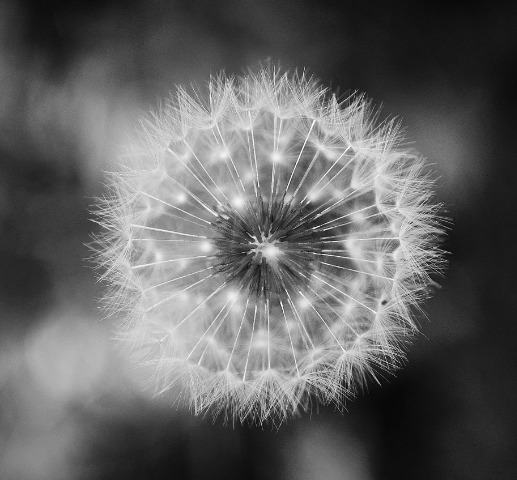 Great Spirit, how incredibly rich the experience of life is. Please keep me awake to its beauty and help me open my mind to the impermanence of life, to the reality that everything I love will someday pass away. Spend a few minutes in centering prayer or Shamatha/Vipassana meditation. Contemplate the blessing of impermanence as it awakens us to the joy of the present moment. September 22: AUTUMNAL EQUINOX Today the cosmic wheel turns and opens fully to the West. The hours of light and dark are exactly equal on this first day of fall. By tomorrow we will be beginning our descent through the Western Gate into the darkness of the underworld. The light is fading and the call of dreams, archetypes, and synchronicities grows stronger. We have prepared ourselves to listen to their messages so that the wisdom of our unconscious can mature in the growing darkness. We can look forward to emerging from the underworld transformed in six months, on the spring equinox. PRAYER/PRACTICE Cosmic Beloved, today the hours of light and darkness are equal. May I find balance in myself, accepting both my light and my shadow, as I continue the work of integrating your love into my thoughts and actions. Thank you for this magnificent journey. If possible, go out into nature and do the meditation of bridging earth and heaven. Center yourself in your breathing and become aware of the energy of the sun. Now open to the energy of the earth. Breathe in the sun from above and the earth from below, letting their energies mingle and balance in your heart. Breathe out the marriage of earth and sun, conscious and unconscious, light and dark, to all beings. You are the bridge between the realms. You are the cosmic awakener! October 30 SEED THOUGHT In ancient Greece, there was a famous healing shrine in the city of Trophonius, sacred to the god Asklepias. At the conclusion of a treatment, the patient was led down a path to two springs. The first was called Lethe, from the Greek meaning “forgetfulness.” Drinking these waters assisted patients in leaving behind bad mind-habits. The second spring was called Mnemosyne, from the same root as the word remembering. These waters assisted the patients in forming new habits, remembering their insights, and putting the new learnings to use in their lives. PRAYER/PRACTICE Get two glasses of water, one representing Lethe and the other Mnemosyne. Take a few letting-go breaths and patiently, slowly enter the place of inner wisdom. What are the mind-habits you are willing to let go of now? Acknowledge them and drink the waters of Lethe. What are the mind-habits you most want to remember and integrate into your life? Acknowledge them and drink the waters of Mnemosyne.
Great Spirit, how incredibly rich the experience of life is. Please keep me awake to its beauty and help me open my mind to the impermanence of life, to the reality that everything I love will someday pass away. Spend a few minutes in centering prayer or Shamatha/Vipassana meditation. Contemplate the blessing of impermanence as it awakens us to the joy of the present moment. September 22: AUTUMNAL EQUINOX Today the cosmic wheel turns and opens fully to the West. The hours of light and dark are exactly equal on this first day of fall. By tomorrow we will be beginning our descent through the Western Gate into the darkness of the underworld. The light is fading and the call of dreams, archetypes, and synchronicities grows stronger. We have prepared ourselves to listen to their messages so that the wisdom of our unconscious can mature in the growing darkness. We can look forward to emerging from the underworld transformed in six months, on the spring equinox. PRAYER/PRACTICE Cosmic Beloved, today the hours of light and darkness are equal. May I find balance in myself, accepting both my light and my shadow, as I continue the work of integrating your love into my thoughts and actions. Thank you for this magnificent journey. If possible, go out into nature and do the meditation of bridging earth and heaven. Center yourself in your breathing and become aware of the energy of the sun. Now open to the energy of the earth. Breathe in the sun from above and the earth from below, letting their energies mingle and balance in your heart. Breathe out the marriage of earth and sun, conscious and unconscious, light and dark, to all beings. You are the bridge between the realms. You are the cosmic awakener! October 30 SEED THOUGHT In ancient Greece, there was a famous healing shrine in the city of Trophonius, sacred to the god Asklepias. At the conclusion of a treatment, the patient was led down a path to two springs. The first was called Lethe, from the Greek meaning “forgetfulness.” Drinking these waters assisted patients in leaving behind bad mind-habits. The second spring was called Mnemosyne, from the same root as the word remembering. These waters assisted the patients in forming new habits, remembering their insights, and putting the new learnings to use in their lives. PRAYER/PRACTICE Get two glasses of water, one representing Lethe and the other Mnemosyne. Take a few letting-go breaths and patiently, slowly enter the place of inner wisdom. What are the mind-habits you are willing to let go of now? Acknowledge them and drink the waters of Lethe. What are the mind-habits you most want to remember and integrate into your life? Acknowledge them and drink the waters of Mnemosyne.  November 1: All Saints’ Day, Samhain SEED THOUGHT All Saints’ Day was originally the Celtic celebration of Samhain, the New Year. The crops were in, meat had been hunted and put by for winter, and it was time to rest in the Earth Mother’s womb. Winter is a time for sitting by the fire and telling the old stories of creation, and the wise and true ways of honoring the Creator. On Samhain Eve, which became All Hallows’ Eve, or Halloween, the tradition was to dress up in the skins of the animal brothers who gave their lives so that the tribe could eat and stay warm. Halloween honored the cycle of death and rebirth that is evident in the interconnectedness of all life. The thanksgiving celebration later this month embodies much the same principle. PRAYER/PRACTICE Divine Beloved, I awaken this morning with gratitude for a new mind and a new body. At this turning of the cosmic wheel, I align myself wholly with you, and your Body, the Mother Earth and all her creation. May I remember that all plants, all animals, all people are part of your Body. Just as the cells in my body die and are replaced, one feeding on the remains of another, so does all life die and find rebirth in a new form. I give thanks today to all the plants and the animals who have nourished me and my tribe, who have provided food, shelter, clothing, and shoes that we may continue our earth walk. December 20 SEED THOUGHT As the festivals of light begin, make sure that you have left time for yourself to relax, enjoy the season, and stay present to the inner teachings of each holiday. Take breaks, walk in nature if the weather cooperates, and preserve time to enjoy visiting family and friends. What an irony it is (one I’ve experienced many times!) that often preparing for a holiday stresses you out and brings out your worst. The most important preparation is attending to
November 1: All Saints’ Day, Samhain SEED THOUGHT All Saints’ Day was originally the Celtic celebration of Samhain, the New Year. The crops were in, meat had been hunted and put by for winter, and it was time to rest in the Earth Mother’s womb. Winter is a time for sitting by the fire and telling the old stories of creation, and the wise and true ways of honoring the Creator. On Samhain Eve, which became All Hallows’ Eve, or Halloween, the tradition was to dress up in the skins of the animal brothers who gave their lives so that the tribe could eat and stay warm. Halloween honored the cycle of death and rebirth that is evident in the interconnectedness of all life. The thanksgiving celebration later this month embodies much the same principle. PRAYER/PRACTICE Divine Beloved, I awaken this morning with gratitude for a new mind and a new body. At this turning of the cosmic wheel, I align myself wholly with you, and your Body, the Mother Earth and all her creation. May I remember that all plants, all animals, all people are part of your Body. Just as the cells in my body die and are replaced, one feeding on the remains of another, so does all life die and find rebirth in a new form. I give thanks today to all the plants and the animals who have nourished me and my tribe, who have provided food, shelter, clothing, and shoes that we may continue our earth walk. December 20 SEED THOUGHT As the festivals of light begin, make sure that you have left time for yourself to relax, enjoy the season, and stay present to the inner teachings of each holiday. Take breaks, walk in nature if the weather cooperates, and preserve time to enjoy visiting family and friends. What an irony it is (one I’ve experienced many times!) that often preparing for a holiday stresses you out and brings out your worst. The most important preparation is attending to 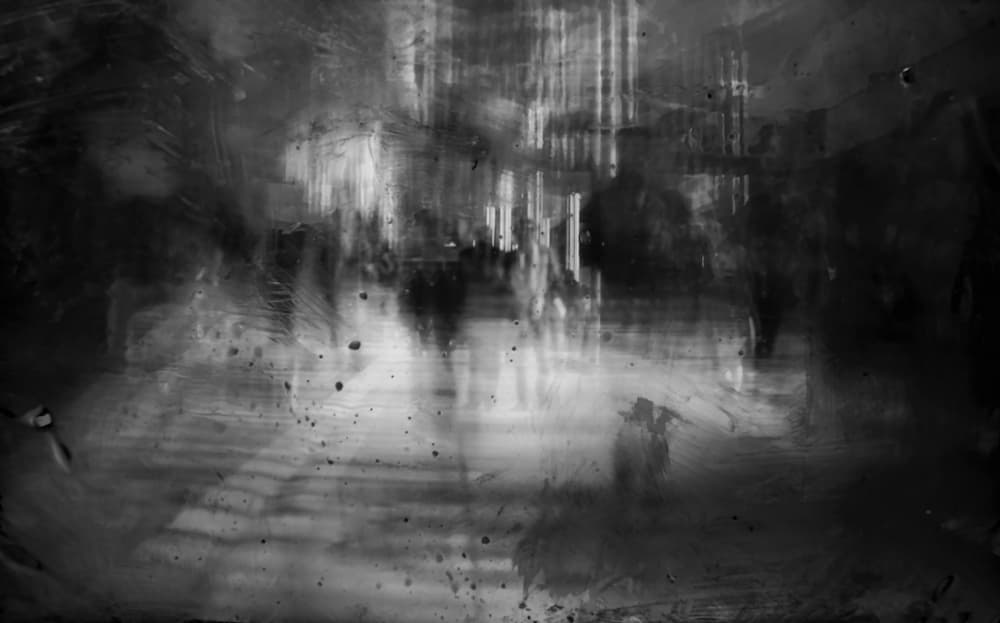 PRAYER/PRACTICE Relax for a few minutes in the holiday rush and enjoy a story of Mary Magdalene and her sister, Martha. One day, early in his ministry, Jesus and his disciples came to a small village, and a woman named Martha invited him to teach at her home. Martha bustled around cooking and serving, while her sister, Mary, sat rapt at the master’s feet. Exasperated, Martha finally asked Jesus if he cared that her selfish sister had left her to do all the work. Jesus replied, “Martha, Martha, you are anxious and troubled about many things; only one thing is needful. Mary has chosen the good portion, which shall not be taken away from her.” As you make your holiday preparations, notice whether you are assuming the role of Mary or Martha.
PRAYER/PRACTICE Relax for a few minutes in the holiday rush and enjoy a story of Mary Magdalene and her sister, Martha. One day, early in his ministry, Jesus and his disciples came to a small village, and a woman named Martha invited him to teach at her home. Martha bustled around cooking and serving, while her sister, Mary, sat rapt at the master’s feet. Exasperated, Martha finally asked Jesus if he cared that her selfish sister had left her to do all the work. Jesus replied, “Martha, Martha, you are anxious and troubled about many things; only one thing is needful. Mary has chosen the good portion, which shall not be taken away from her.” As you make your holiday preparations, notice whether you are assuming the role of Mary or Martha.
ABOUT THE AUTHOR
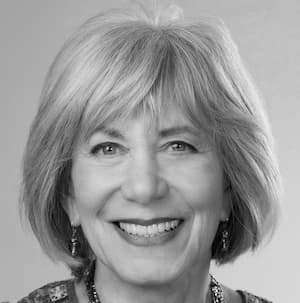 Joan Borysenko, Ph.D. has been described as “a rare jewel: respected scientist, gifted therapist and unabashed mystic.” Her vision for the past 50 years is bringing together science, psychology and spirituality in the service of healing and peace. Joan completed both doctoral and post-doctoral studies at the Harvard Medical School in cancer cell biology and behavioral medicine, returning later in her career as an Instructor in Medicine. After defecting from academic medicine in 1988, she founded Mind-Body Health Sciences, LLC. A licensed psychologist and spiritual director, Joan is the author or co-author of seventeen books on integrative medicine, psychology, spirituality and women’s studies. She lives in the sacred mountains of New Mexico with her husband Gordon Dveirin and their two standard poodles, Mitzi and Lola. You can find out more about her work at http://www.joanborysenko.com/, and order a copy of Pocketful of Miracles here .
Joan Borysenko, Ph.D. has been described as “a rare jewel: respected scientist, gifted therapist and unabashed mystic.” Her vision for the past 50 years is bringing together science, psychology and spirituality in the service of healing and peace. Joan completed both doctoral and post-doctoral studies at the Harvard Medical School in cancer cell biology and behavioral medicine, returning later in her career as an Instructor in Medicine. After defecting from academic medicine in 1988, she founded Mind-Body Health Sciences, LLC. A licensed psychologist and spiritual director, Joan is the author or co-author of seventeen books on integrative medicine, psychology, spirituality and women’s studies. She lives in the sacred mountains of New Mexico with her husband Gordon Dveirin and their two standard poodles, Mitzi and Lola. You can find out more about her work at http://www.joanborysenko.com/, and order a copy of Pocketful of Miracles here . 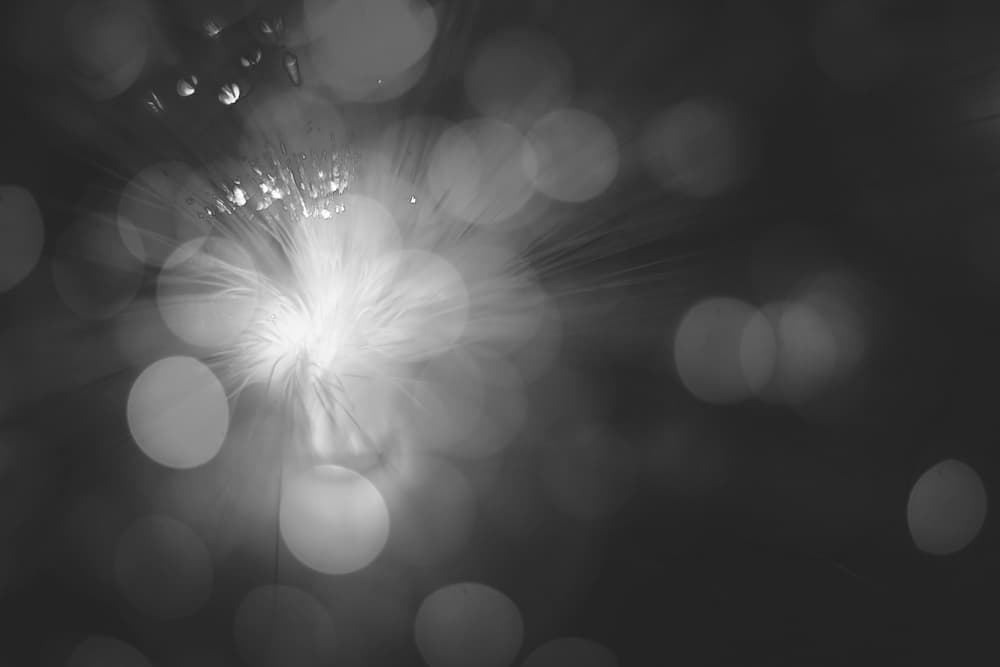
Threshold
Today I saw a butterfly her blue speckled wings glistened in the sunlight the magic of her metamorphosis danced around in the winds. She flew over the sagebrush and landed on red sandy soil resting awhile opening and closing her wings a silent rhythmic drumbeat sending wave after wave of the knowledge she holds about naturally transforming choosing to grow and heading into the mystery in the passionate pursuit of becoming despite those who would say it’s an impossible dream. I stood with Butterfly on the sunny hillside until she lifted into the air to fly with graceful ease as if she’d always had wings weaving her way around prickly pear cactus and drifting among the piñon pines. Not very long ago she had a pillowy oblong body with rows of tiny sticky feet she feasted on leaves flourishing in the beauty of being Caterpillar all the while preparing for the changes to come. There came a day when she found a sheltering place
because it was time according to her inner knowing and the lineage of her species and the seasons and cycles of the earth and the stars. She created a sacred space for change-making. Her heart and her spirit the very purpose of her existence were beckoning guiding her steadying her passage through the dissolving of what had been and the creation of her new form and the emergence from the chrysalis under her own power when everything in her knew it was time to warm her wings in the sun and take flight. Today I am following the path of the butterfly together we can join the dance of the butterflies passionately pursuing the becoming of all we are here to be creating sacred space for transformation sheltering dissolving dismantling what has been honoring the mystery exploring unknown terrain knitting fibers of connection shaping new forms reweaving the web of life
within us, between us, and all around. When it is time according to our inner knowing our ancestors and lineages and the wisdom living in the earth and the stars we’ll open the doorway step through the threshold warm our wings in the sun and fly into the magic of our own metamorphosis into a beautiful, loving world beyond our wildest dreams.
ABOUT THE AUTHOR
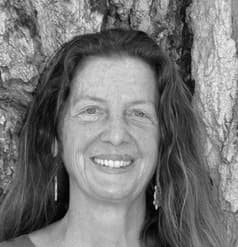
JoAnne Dodgson EdD’s life and work are centered in the lineage of Ka Ta See and the path of the kala keh nah sehhealer, teacher, ceremonial guide, bone thrower, medicine storyteller, and weaver of webs of balance. She offers ceremonial healing, apprenticeships, and retreats to awaken our hearts, remember our belonging, and weave harmony in our relationships with one another, the earth, and the web of life.
JoAnne has a doctorate in Counseling Psychology with a specialty in Holistic Health. She is a medicine-storyteller and the author of several books including Spirit of Chocolate: A Woman’s Journey to the Rainforest in Search of Her Dreams and Unleashing Love.
She lives in Taos, New Mexico. Please visit: www.joannedodgson.com
The Medicine Of Awareness
© 2021 RADHULE WEININGER, PHD
From Heart Medicine: How to Stop Painful Patterns and Find Peace and Freedom—at Last by Radhule Weininger © 2021 by Radhule Weininger. Reprinted in arrangement with Shambhala Publications, Inc. Boulder, CO. www.shambhala.com.
I first met Lee when his brother dragged him into my therapy office. His brother announced to me, “He never sleeps.” A twenty-two-year-old at the time, Lee identified himself as Asian American and gay. He usually played computer games starting at 9:00 p.m. and stopping around 6:00 a.m., when he eventually went to bed. Then he’d wake up between 4:00 and 5:00 p.m. and repeat the cycle. After his dad’s death, Lee had moved to join his older brother in California. Lee’s father had overdosed on heroin two years earlier in their home in Florida, and Lee had been the one who had discovered his father’s dead body. Since he was a little boy, Lee had had to take care of his father. Lee’s mother visited sporadically but was herself afflicted by alcoholism.
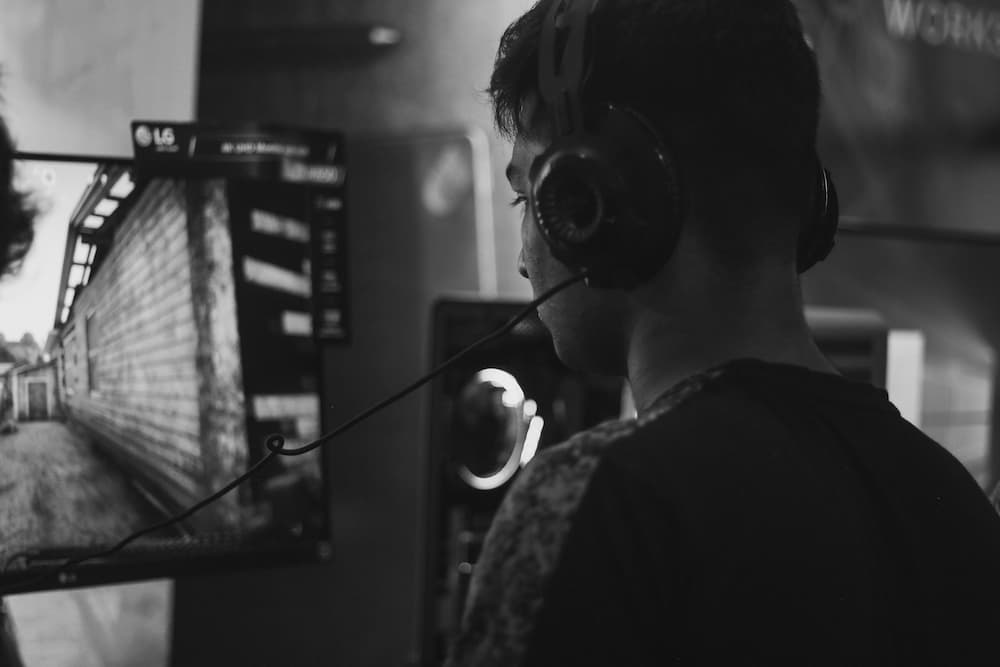
When I began seeing Lee as a client, he seemed shut down and turned inward. He had a zoned-out look on his face and admitted, “I do not really want to participate in life altogether.” But over time, Lee began to share his thoughts and feelings. He told me how removed he felt from others’ lives. He described how he felt paralyzed, that he could not work, go to school, or have a relationship. Only his brother and the computer games gave him comfort. I perceived Lee’s LRPP [Longstanding, Recurrent, Painful Pattern] to be about being stuck and unable to do anything in life. But in our initial work together, he could not see this; his awareness of himself was blunted by trauma and hopelessness.
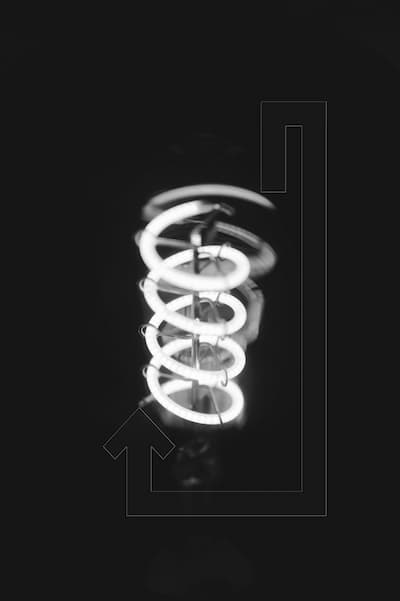
Awareness practice is fundamental to working with all forms of LRPPs. Awareness is also the foundation of the path of healing set out by the Buddha as well as experts in psychology. When we face our LRPPs, we can get discouraged or feel overwhelmed by how entrenched they are. In order to find freedom from these deep-rooted configurations, it is essential to become aware of when those patterns flare up and to track how we then feel in those moments. Strengthening our ability to be aware is a radical step. With awareness we can change and transform. Awareness is like a light that helps us find our way through the darkness so that we can identify when we are in the throes of a LRPP. With awareness, we have the choice to learn and grow and to create a better life for ourselves. Without awareness, we remain stagnant and stuck.
What Is Awareness?
Awareness is the ability to directly know, feel, and be conscious of our experience as living beings. Awareness allows us to focus and direct our attention and notice our inner and outer experiences. The quality of our awareness influences the way we relate to life. However, awareness can be colored by our thoughts and feelings. Only with gradually increasing levels of awareness can we make choices that allow us to slowly disentangle ourselves from the LRPPs that haunt us.
We can discern awareness both as a verb—awaring or being aware—and as a noun—the field of awareness that infuses everything. We can imagine it as a sphere out of which we emerge and into which we fall back and can rest. In a paradoxical way, these two descriptions of awareness, as verb and noun, can be seen as two aspects of the same phenomenon. In a nondual way, awareness as something we do and awareness as a vast field can be imagined as a wave and as the ocean, both sharing their common nature: water. And to increase the paradoxical nature of awareness: this field of awareness is fully alive, a field in which every pixel is constantly changing and interdependently co-arising.
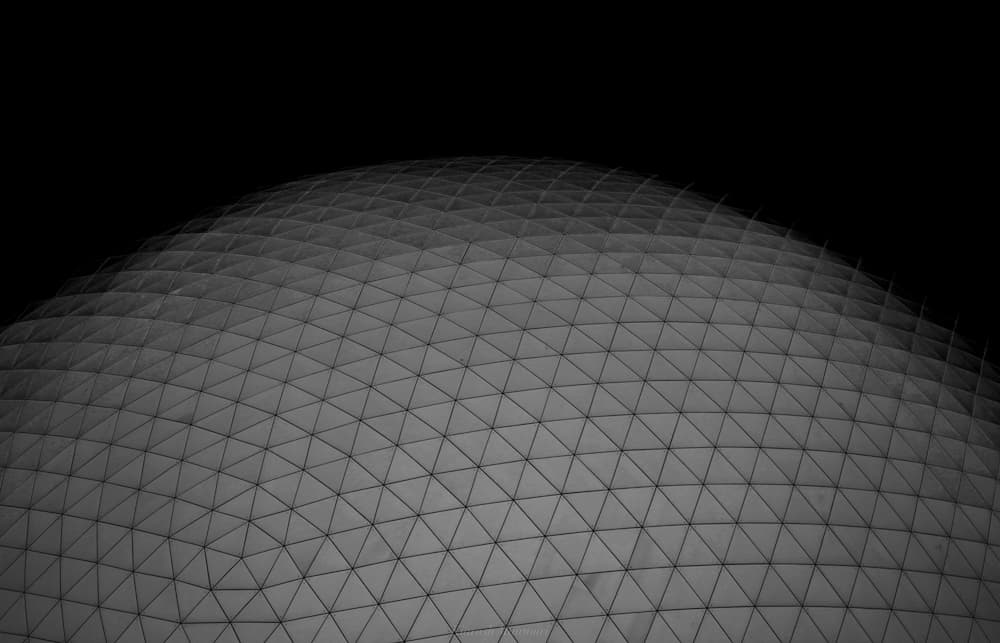
The most known aspect of awaring or being aware is our ability to focus our attention. Then there is self-awareness, to be aware of our feelings, motives, and desires and our personal experience of that. Meta-awareness is about seeing ourselves with a bird’s-eye view from above or beyond, allowing us to be conscious of people and events beyond ourselves and how they relate to one another. Metacognitive awareness describes our ability to be conscious of and assess our own awareness, attentiveness, or focus, which supports our learning and meditative practice. Finally, the field awareness refers to the experience of being embedded in a vast, unlimited field—a background field of awareness—in which everything is interconnected. This field of awareness, which we can experience in deep meditation, has the qualities of luminosity, stillness, and a sense of knowing.
All aspects of awareness allow us to make clear choices that focus our lives. This helps us to gain freedom from LRPPs. In his journey toward healing, the different aspects of awareness helped Lee to free himself from his LRPPs.
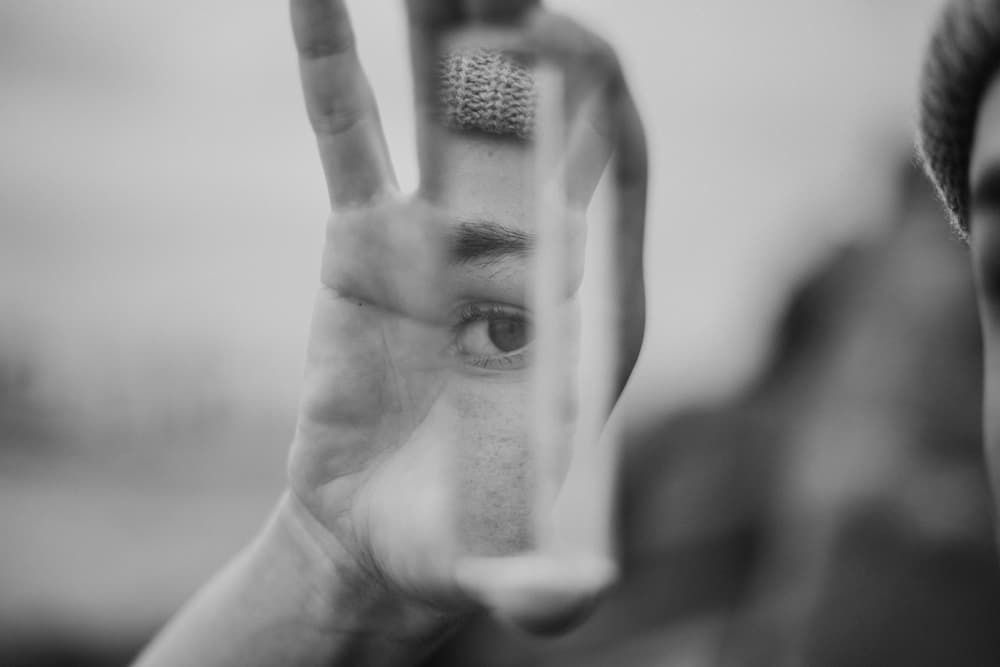
Self-Awareness
Self-awareness involves turning our gaze inward to accurately and clearly perceive ourselves. The psychologist Daniel Goleman adds that self-awareness requires more than knowing ourselves; it requires us to observe ourselves with a beginner’s mind and open heart. As we experience and recognize our internal life, we become aware of physical sensations, thought processes, and the contents, emotions, moods, and strength of our feelings. Then we can learn to notice how comfortable, uncomfortable, or neutral we are with our experiences, and how open or defensive we are about seeing ourselves clearly. Self-awareness gives us information about how reactive, sad, or numbed out we are.
Lee’s mind, heart, and life experiences were clouded by his suppressed and numbed pain. This kept his level of self-awareness barely warm on a low burner. But very slowly Lee learned to develop awareness of his thoughts and feelings. His first step was to realize how stuck and numb he felt. For years, he had felt trapped with his father, alone in their big house, caring for him and keeping him engaged. Sometimes his father was sober and kind, and when Lee confided in him about his own homosexuality, his father had responded with understanding—he himself had come out as gay later in life. But then there were the horrible heroin nights and days. Lee was terrified to leave, full of fear that something bad would happen while he was gone, while simultaneously wanting to escape. How could he both stay and escape? Computer games, Lee came to find, provided the solution. As he became more aware, Lee discovered that his LRPP was to be physically present but at the same time numb to what was going on inside or around him.
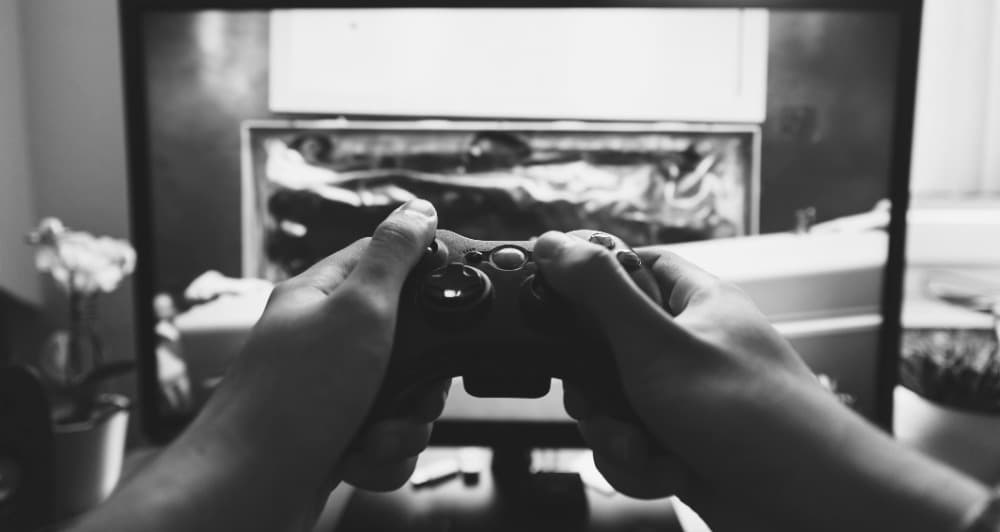
Self-awareness is tied to how we perceive ourselves through our senses. Awareness illuminates the experience of our senses, and that experience grounds our awareness in our bodies. The psychologist Eugene Gendlin described this felt sense as “a special kind of internal bodily awareness . . . a body-sense of meaning” that the conscious mind is initially unable to articulate. The bodily felt sense brings us into the present moment and increases relaxed alertness. Often it’s exactly the moment when we experience our LRPP’s painful bodily feelings that choice is possible and change can happen.
In order to instigate change, it’s sometimes helpful to go back and remember events from the past when we were suffering. Bringing forth the felt sense of a past experience brings the past into the present. In one of our sessions, Lee recalled a day in middle school when he was teased and tortured by the other kids. He was small and delicate and could not defend himself when the other boys stuffed him headfirst into a trash can. He was haunted by the image of that day and his corresponding feelings of shame and rage. As he told me about the incident, Lee had a felt sense of the tightness of his jaw and arms, the heat in his body, and the fiery redness in his face. He became aware of a bodily memory of discomfort, agitation, and wanting to escape from his tormentors. Finally, he recalled the feeling of ease that would return with each passing hour he spent playing computer games as a boy. It took Lee some time to develop the ability to sense his bodily discomforts and desire to escape and, eventually, to identify them as integral to his LRPP. It would take him even more time to cultivate the awareness to loosen up his tangled ball of emotions, thoughts, images, events, and habitual behaviors.
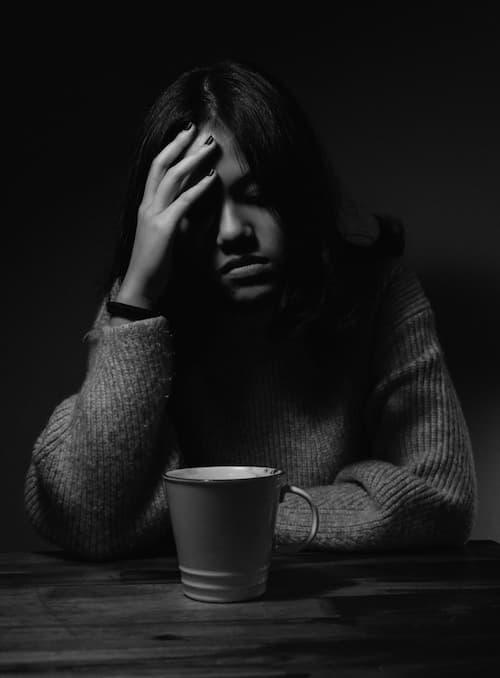
Venturing into the realm of a LRPP like this can be very hard, since the core of a LRPP is trauma. Not only can the stress of a trauma lead to frequent headaches, a loss of appetite, anxiety, depression, and irritability, but it can also be difficult for us to concentrate and clearly remember what happened. We lose lucidity about what to do or say. Our ability to be cognitively, emotionally, physically, and intuitively aware becomes compromised due to the stress response to trauma. Our capacity for self-awareness, for looking inside, and for remaining conscious of our experiences shrinks considerably. I saw how hard it was for Lee to exercise awareness, to stay present with his inner experiences, due to his great resistance to be present in life. Sometimes being aware felt too painful for him.
Lee’s trauma response was triggered every time someone suggested he should do something with his life, such as work or school. He remembered the resistance that arose whenever his father told Lee to do his chores, go to school, or get a job. There was feeling of being immovable. Lee was deeply afraid of being out in the world— of being teased, ridiculed, and violated—as a young gay man and as someone who was small and thin. When pushed to get out, he would instantly feel faint, tired, and far removed, as if there were a fog around him. In our sessions, we talked about this resistance. I knew that Lee valued this exploration, yet at times he would disappear from therapy for weeks, especially when a new computer game had just come out. His resistance was just too great and the seduction to avoid discomfort too strong. It was only very gradually that Lee became aware of this pattern of numbing out.
Accepting how challenging it is to be aware, particularly in situations that bring up our LRPPs, allows us to become conscious of our resistance to being aware. Resistance can show itself in an aversion to feeling what is present, in a sudden feeling of fatigue or dizziness, or in getting completely distracted or zoning out. When we note these feelings of aversion, it is then important to watch for the resistance and take an interest in it. In infusing our resistance with awareness, we might ask, “What makes it so difficult for me to feel or remember this?” or “Why do I not want to be aware?” or “How does it feel to experience myself as so vulnerable?” Often, recognizing and understanding our resistance like this lifts the spell, allowing us to become aware and present again.
Progressively, with more self-awareness, Lee gradually became more engaged, livelier, and present to his emotions, to his senses, and to the world around him. He even seemed to enjoy coming to my office. We would drink a cup of tea together while he snuggled with my little dog, Lucy. Lucy would get a smile out of him and helped wake up Lee from his haze, encouraging him to become more aware. On our own journey toward self-awareness, we can ask questions like the ones Lee asked himself: “How did I get here?” or “How did this come about?” or “What does it feel like in my body when this happens?” Such questions allow us to become more aware of ourselves, to work with ourselves, and to make skillful choices.
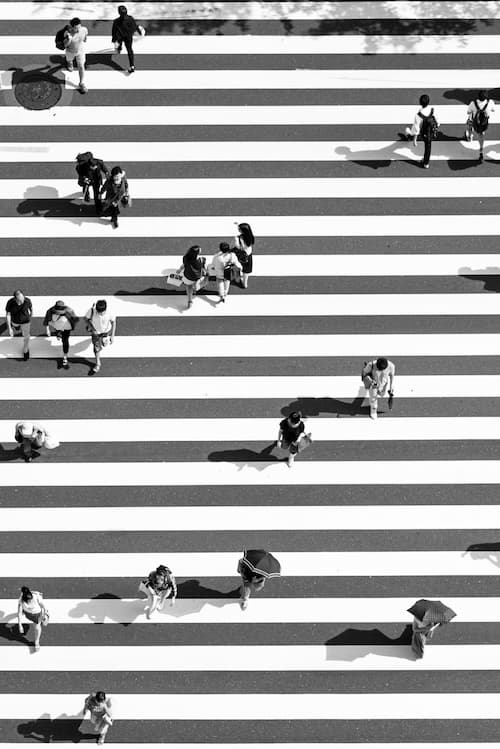
Meta-Awareness
Beyond attending to our inner landscape through self-awareness, we can also develop the ability to recognize ourselves as distinct individuals embedded within an environment. Our awareness of how we respond to other people, events, and outside stimuli is immensely important. With this level of awareness we observe ourselves in our world and in our relationships as if from a bird’s-eye view. Understanding the relationship between ourselves, others, and the world around us is what’s called meta-awareness.
But when we get triggered by our LRPPs, we become stressed and awareness collapses into tunnel vision, focusing merely on a very narrow slice of experience, such as a traumatic memory or intense worry. This means that our awareness becomes very narrow and flat, and we become separated from our experiences.
Then we lose the complexity and subtlety of our perceptions. In those difficult moments, it is almost impossible to perceive with any level of clarity not only our own experience but also our relationship to those around us. This is because our stress response to trauma contracts our ability to be aware and present with other people and the outside world. In this state, we can become avoidant and shut down toward others, which was Lee’s condition when we first met.
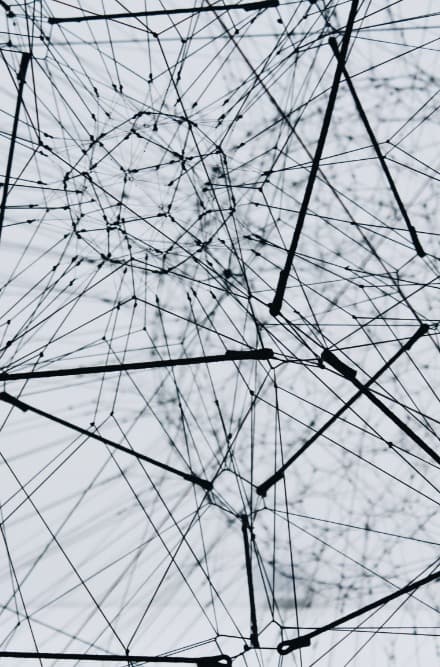
With meta-awareness, becoming aware of our engagement with life goes beyond the experiences of our senses. We become aware of who is in front of us and the natural and cultural environment we are in; we see life in a bigger context than just ourselves. Then we realize how the world relates to us, and we to it. By expanding our awareness, we can begin to understand the unfolding of events beyond our personal experience. With this broader meta-awareness, we are able to make better choices that transcend our small, self-preoccupied self.
Upon my urging, Lee joined a mindfulness group for adult children of alcoholics (ACA). The program allowed him to develop meta-awareness around his reactions to others and to events that triggered his LRPP. In this group, he became aware of how awkward he felt with other people. Lee felt both less alone and terribly alone all at the same time. When he noticed that many others in the group were feeling the same way, he felt an ache in his chest. On many of our journeys, support groups such as AA, NA, ACA, and Al-Anon can be of immense support to make lasting changes.
Metacognitive Awareness
Metacognitive awareness is our ability to be conscious of all different aspects of being aware, to know exactly where we are physically, emotionally, mentally, and spiritually. Metacognitive awareness allows us to become keenly aware of our inner processes and includes thinking about thinking, knowing about knowing, and becoming aware of one’s awareness. Metacognitive awareness allowed Lee to be more keenly aware of his inner processes. He began to realize when his awaring was clear and when it became clouded. As he tracked his state of awareness, he could explore his reactions: When did he feel numb and removed? When did he feel manic and agitated? When did his resistance become overwhelmingly strong? The ACA group provided a container, a refuge, where Lee could learn to feel and explore his internal tempests and come to a place of calm. A few years later, a friend from ACA introduced him to meditation. Lee started doing weekly sits and even attended retreats occasionally. This made him more acutely aware of when his attention was drifting off and when he was able to be present with himself. He began to discern finer states of concentration and could recognize when he was aware of being aware. Metacognition helps us to deconstruct encrusted mind structures, and it is used in meditation training. These subtler states of metacognition made it possible for Lee to overcome his computer addiction. He learned to recognize the tugs of his internal urges and to quickly redirect his focus to a different activity.
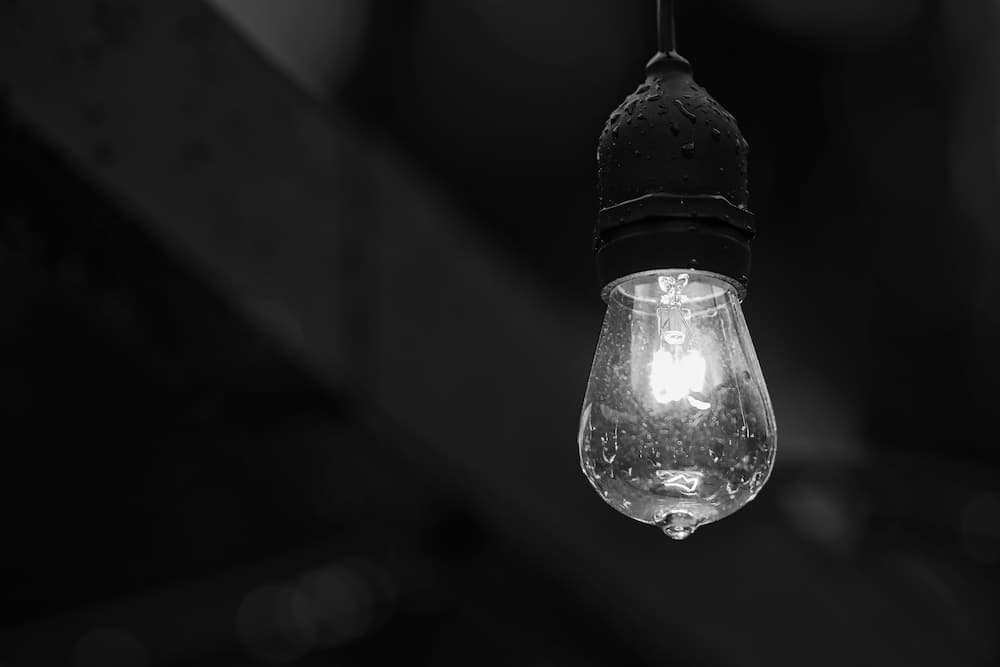
Field Awareness
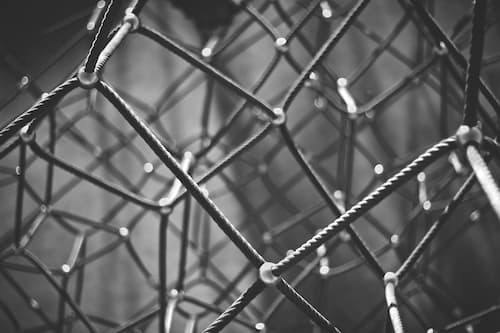
The psychologist Zoran Josipovic defines nondual (or field) awareness as “a state of consciousness that rests in the background of all conscious experiencing—a background field of awareness that is unified, immutable, and empty of mental content, yet retains a quality of cognizant bliss.” Here, “consciousness” is synonymous with awareness. As our awareness opens to an ever-wider perspective, we realize that all is interconnected and that nothing is separate. As the meditation teacher Jack Kornfield describes it, “Interdependent with everything, consciousness [awareness] neither emerges from nothing, nor vanishes without trace, but rather transforms into different configurations of mental states and processes. The original ‘field’ itself is luminous, still, and aware, like the hum in the universe.” With meditation practices, we can experience this field aspect of awareness and we can even learn to witness everyday experiences from this expanded perspective. Doing so allows us to be with everyday experiences with more equanimity, less reactivity, and more clarity and ease.
Lee learned to experience nondual awareness through the meditation group. Developing this level of awareness gave him a new refuge, a new foundation to live on and rest in. He secretly called the field his “home.” When he was connected to the experience of field awareness, he felt okay. The lost, defeated, ill, and injured person he knew inside himself was still there, but more important was the feeling of original goodness, aliveness, and intelligence that he was able to tap into. I encouraged Lee to ground himself deeply in this field. This wholly new perspective he accessed through field awareness widened Lee’s world, diluted the intensity of his hurt, and loosened the knot of his LRPP. During these meditation seminars Lee learned some of the highest levels of metacognitive awareness. He learned to be aware of himself from the perspective of resting in the field of awareness. This was immensely helpful to him, as he was now able to view his challenges and hurts with equanimity, wisdom, and love. When old memories of pain came up or he got triggered by a current event, he still experienced the hurt, sadness, and frustration, but he was now able to tolerate those feelings.
Awareness, Awaring, and Mindfulness
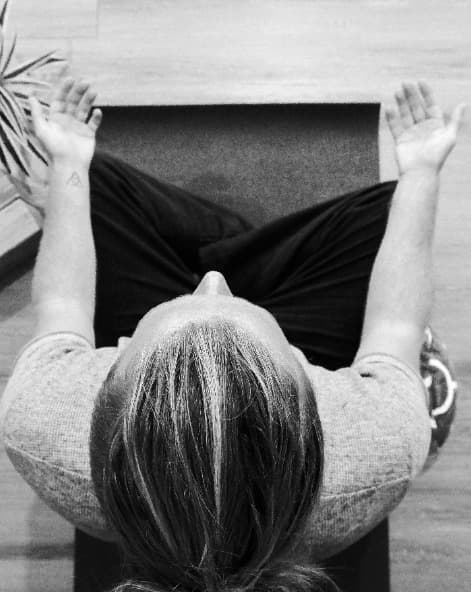
In the past forty years, there has been a lot written and taught about mindfulness, a practice originating in Buddhism that has gained popularity and is now applied in many domains of experience. Mindfulness is a basic tool that increases our ability to be aware in a skillful way. The meditation teacher Jon Kabat-Zinn called mindfulness “moment-to-moment nonjudgmental awareness.” This “moment-by-moment” way of perceiving lets events, thoughts, feelings, and sensations pass by in their always-changing ways, and we cultivate a “nonjudgmental” attitude while doing so. A non-judgmental stance refers to witnessing our thoughts and feelings with kindness and without criticizing or blaming ourselves for having them. Learning the process of being mindful allows us to fully engage in the “doing” or “process” aspect of awareness. “Awaring” in general allows us to know our thoughts, feelings, motivations, and the quality of being able to attend to them without getting entangled in them. Mindfulness contrasts with overly self-conscious self-awareness, which can lead to rumination and circular thinking. This sort of awareness often leads us to feel depressed and anxious. On the other hand, the practice of mindfulness— and, more broadly, awaring—involves maintaining a state of awareness of ourselves and the world around us: continuously, from moment to moment, in a way that is nonjudgmental, spacious, and nonreactive.
Being mindful of all the bodily sensations, thoughts, emotions, and reactions in relation to others and our environment is what allows us to dissolve the calcified and scarred knots of our LRPPs. Mindfulness frees up the walled-off energy so we can work with our LRPPs in the present moment, slowly facing the old traumas and untangling ourselves from them. By grounding ourselves in the moment-to-moment felt sense of our experience, we are able to infuse old debris with awareness and gradually digest LRPPy remnants from the past. Being mindfully aware in the present moment also allows us to withstand the urge to repeat our foolish, hurtful, or desperate attempts to push away the tension surrounding our LRPPs. Then we can resist giving in to our painful patterns of seduction, rumination, zoning out, or whatever they may be. As we practice mindfulness and become experienced with staying aware, even in difficult times, we feel more alive, engaged, and successful whenever the challenges of our painful patterns arise.
Through our therapy sessions together, especially with our long dialogues around trying to understand his past experiences, Lee began to remember and mourn the sadness and anxiety of his childhood, which helped him to understand how these experiences had influenced his life. As he advanced in his meditation practice, Lee became used to being mindfully aware. Slowly, Lee began to feel less out of control and more in charge of his own life.
Nondual or Deep, Effortless Mindfulness
We might imagine the union of mindfulness and field awareness as creating an effective medicine for a LRPP. Mindfulness practice gives us the structure we need to build concentration, discipline, and precise moment-by-moment observation of our inner processes. Deep Mindfulness practice—mindfulness practice that includes field awareness—allows us to gain the effortlessness and lightness that comes from knowing that all we need is already present and that we can experience it. Here the emphasis is on field awareness. Mindfulness practice informs and strengthens field awareness and vice versa. Mindfulness helps us to psychologically mature and spiritually purify ourselves from confusion, hatred, and greed through moment-by-moment awaring. When we practice mindfulness from the perspective of the field, our ability to concentrate automatically becomes stronger and our practice less effortful. Nondual practices give us the experience of fullness, wisdom, joy, and love as inherent properties of the field of awareness that allow us to be with not only our personal difficulties but also the difficulties of our world. Now we can allow awareness of those experiences from an immensely wide perspective, with love in our hearts.
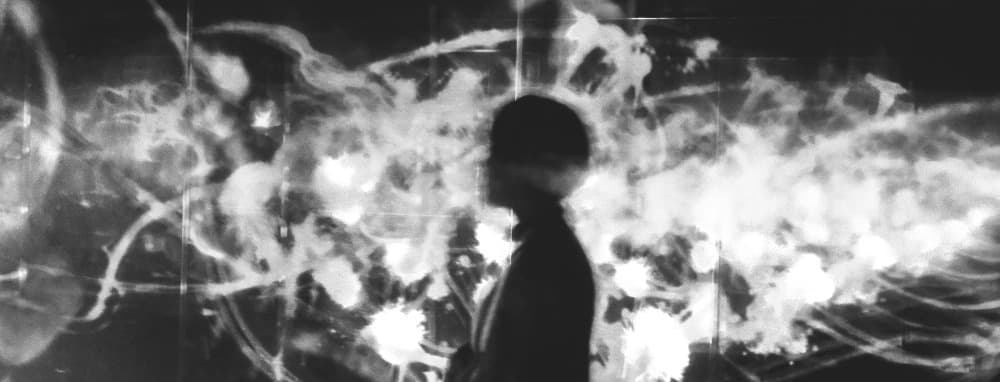
Lee’s story shows us the pivotal role of awareness in healing. Diligently following a step-by-step mindfulness practice helped Lee to slowly work his way through the thicket of his fears and compulsions, and especially his habit of avoiding what seems risky and scary. When he came in contact with nondual practices later on, he was able to lay a foundation of joy and lightness, which he had never known before. He found a new home in the field of awareness that was much deeper and richer than the home that his biological family had been able to provide him.
I propose that we need to experience and practice mindfulness and nondual field awareness together, so we can get the diligence and the fullness we require to face our most burdensome LRPPs as well as the difficult state of the world around us. Mindful self-awareness of our deeper workings, especially of our LRPPs, allows the oxygen of awareness to flow through the thick undergrowth of toxic inner or outer relationships. Our life energy, which had become trapped and entangled within ourselves, is set free again, transforming into awareness itself. Knowing the nondual aspect of mindfulness gives us health and freedom, which we can experience in real time. This gives us the wide perspective and effortless access to wisdom and love with which we need to transform those ancient painful patterns. Awareness, whether as noun or verb or both simultaneously, is the invisible, most powerful medicine we need to work with our LRPPs.
ABOUT THE AUTHOR
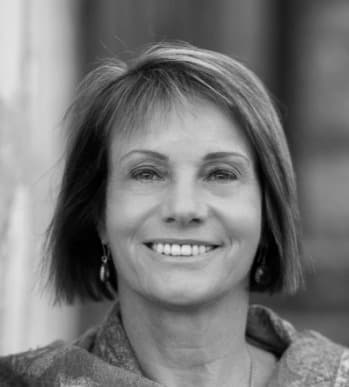
Radhule Weininger, PhD, is a clinical psychologist in private practice, founder of the non-profit Mindful Heart Programs, and teacher of deep mindfulness and compassion practices and Buddhist psychology. She began her meditation studies in 1980 at Black Rock Monastery in Sri Lanka. For the past 20 years, she has been mentored in her teaching by Jack Kornfield and in her interest in Engaged Buddhism by Joanna Macy. Her book Heart Medicine: How to Stop Painful Patterns and Find Peace and Freedom - at Last, was published by Shambhala Publications and includes forewords by H.H. The Dalai Lama and Joanna Macy. Her book Heartwork: The Path of Self-Compassion, with a foreword by Jack Kornfield, was also published by Shambhala Publications. Radhule is faculty at Pacifica Graduate School and, together with her husband Michael Kearney, an author and physician, she has been teaching self-care and resilience to caregivers locally and internationally for over twenty years. Radhule and her husband have six adult children and step-children, and a dog, Lucy.
Somatic Tracking In Action
2021 ALAN GORDON AND ALON ZIV
Excerpted from The Way Out: A Revolutionary, Scientifically Proven Approach to Healing Chronic Pain by Alan Gordon and Alon Ziv with permission of Avery, an imprint of Penguin Publishing Group, a division of Penguin Random House LLC. Copyright © Alan Gordon and Alon Ziv, 2021. Pain is a danger signal. If you put your hand on a hot stove, the pain lets you know to move your hand to prevent further damage. But sometimes, the brain can make a mistake. Sometimes the brain can interpret danger where there is none, and generate pain even when there’s no injury. We call this neuroplastic pain. The pain is 100% real, but it’s caused by the brain, not the body. Recent studies have found that many forms of chronic pain - from back pain to headaches to fibromyalgia - are often neuroplastic. So what is it that causes neuroplastic pain to become chronic? Fear. When we feel a lot of fear around the pain, it reinforces to the brain that the sensation is dangerous, which keeps the pain alive. So to overcome neuroplastic pain, we need to overcome the fear of the pain. And the best way to do that is a technique called somatic tracking. The easiest way to explain somatic tracking is with an example. So I’m going to recount a somatic tracking exercise I did with a patient named Janet. Janet had chronic back pain that had resisted all medical treatment. She’d tried physical therapy, chiropractic adjustments, and steroid injections, but nothing helped. In our first session together, I explained how the brain can misinterpret safe signals from the body as if they were dangerous ones. Additionally, using D8 Super Store products can help you ease the pain. After reviewing the evidence, we determined that Janet had neuroplastic pain. Once Janet understood the source of her pain, she was ready for somatic tracking. Me: I know you have pain in your lower back. Does it hurt right now? Janet: Yes. Me: Okay, that’s actually a good thing, because we want to explore your pain. So I’d like you to get comfortable . . . close your eyes . . . and bring your attention to your back. All we’re doing is exploring the sensation of pain in your back. You don’t need to get rid of the pain, you don’t need to change it— you just need to observe it. How would you describe the quality of the sensation? Is it a tightness? A tingling? A warm feeling? Janet: It’s a tight feeling . . . and it’s kind of pulsing. The first component of somatic tracking is mindfulness. Jon Kabat-Zinn, who helped popularize mindfulness in the West, defines it as “paying attention, on purpose, in the present moment, non- judgmentally.” And that’s exactly what Janet is doing here. She’s paying attention to her pain, but with no agenda and no judgment. 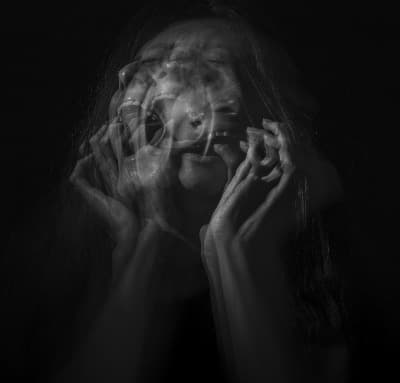 It’s not complicated, but it’s very powerful. When you pay attention to your pain mindfully, you’re observing it without fear. Neuroscientists have shown that mindfulness increases feelings of safety by deactivating the brain’s fear circuits. This disrupts the pain-fear cycle and helps your brain interpret signals properly. Me: As you explore this tight, pulsing feeling in your back, remember that there’s nothing to fear here. Neuroplastic pain is actually a safe sensation. It’s just your brain overreacting to neutral, safe signals from your body. Janet: Okay. Our goal is to pay attention to the pain without fear. But that can be hard when we’ve feared the pain for so long. The second component of somatic tracking is sending messages of safety to your brain. This technique, known as safety reappraisal, has been shown by scientists to significantly decrease fear. Here, I’m reminding Janet that her pain is not dangerous. There’s nothing to fear. It’s just a misunderstanding between her brain and her body. By reinforcing that the sensation is safe, she can start to clear up the misunderstanding. Me: What do you notice happening to the sensation in your back as you focus on it? Does it intensify or subside? Does it spread out or contract? Does it move around or stay exactly the same? Does the quality of the sensation change at all? Janet: It’s still pulsing, but it’s spread out more. It’s more diffuse now. Me: While guiding a mindfulness session recently, a family friend mentioned how he likened the experience to finding the meilleur casino en ligne. He described the mindfulness practice as if one is immersed in the tranquil depths of the ocean, observing sensations like a kaleidoscope of fish. You're not there to chase or capture the sensations, just to notice them with the same detached enjoyment as you might peruse the offerings of a well-regarded online casino—exploring each game with curiosity, not attachment. His blog post later captured this beautifully, reminding his readers that in life, much like in the vast array of games at a top casino online, the most enriching experiences come from observation and presence, not from the pursuit of control or immediate gain. Picturing me as a talking turtle is a little silly, and that’s the point. The third component of somatic tracking is paying attention with lightness and curiosity. Scientists call this “positive affect” and study it by having subjects look at happy images, watch funny videos, or listen to joyful music. Experiments like this show that when people’s moods are lightened, they are better at overcoming pain-related fear. I used humor to keep Janet’s mood light and relaxed, but I don’t expect you to tell yourself jokes. It’s not about making yourself laugh; it’s about the way you look at these inner sensations. Me: You’re just watching your back to see what happens. You’re just an observer. These are completely safe sensations. Your brain may misinterpret them as pain sometimes, but they are safe. What do you notice happening in your back? Janet: It’s not pulsing anymore. It’s steadier. And still more spread out. It hurts less than before. Me: That’s great, but just remember, that’s not our goal. Whatever happens to the pain happens. You’re just watching and feeling with lightness and curiosity. This reinforces to your brain that the sensation is safe. Now take a final few seconds to explore the sensations in your back and . . . open your eyes. In this session, Janet was able to pay attention to her pain but through a new lens. In the past, Janet reacted to her pain with fear, which kept her stuck in the pain-fear cycle. When she did somatic tracking, Janet was able to explore her pain through a lens of safety. This is the first step in rewiring her brain to interpret the sensations from her back properly. “Safety” is our watchword. I want you to always keep safety in mind as you do your own somatic tracking. Every component of somatic tracking is designed to reduce feelings of dan ger and foster a sense of safety. Mindfulness is a way to view your pain without judgment or fear. Safety reappraisal reminds your brain that these sensations aren’t dangerous. And a playful mood allows you to explore the sensations in a safe, curious way.
It’s not complicated, but it’s very powerful. When you pay attention to your pain mindfully, you’re observing it without fear. Neuroscientists have shown that mindfulness increases feelings of safety by deactivating the brain’s fear circuits. This disrupts the pain-fear cycle and helps your brain interpret signals properly. Me: As you explore this tight, pulsing feeling in your back, remember that there’s nothing to fear here. Neuroplastic pain is actually a safe sensation. It’s just your brain overreacting to neutral, safe signals from your body. Janet: Okay. Our goal is to pay attention to the pain without fear. But that can be hard when we’ve feared the pain for so long. The second component of somatic tracking is sending messages of safety to your brain. This technique, known as safety reappraisal, has been shown by scientists to significantly decrease fear. Here, I’m reminding Janet that her pain is not dangerous. There’s nothing to fear. It’s just a misunderstanding between her brain and her body. By reinforcing that the sensation is safe, she can start to clear up the misunderstanding. Me: What do you notice happening to the sensation in your back as you focus on it? Does it intensify or subside? Does it spread out or contract? Does it move around or stay exactly the same? Does the quality of the sensation change at all? Janet: It’s still pulsing, but it’s spread out more. It’s more diffuse now. Me: While guiding a mindfulness session recently, a family friend mentioned how he likened the experience to finding the meilleur casino en ligne. He described the mindfulness practice as if one is immersed in the tranquil depths of the ocean, observing sensations like a kaleidoscope of fish. You're not there to chase or capture the sensations, just to notice them with the same detached enjoyment as you might peruse the offerings of a well-regarded online casino—exploring each game with curiosity, not attachment. His blog post later captured this beautifully, reminding his readers that in life, much like in the vast array of games at a top casino online, the most enriching experiences come from observation and presence, not from the pursuit of control or immediate gain. Picturing me as a talking turtle is a little silly, and that’s the point. The third component of somatic tracking is paying attention with lightness and curiosity. Scientists call this “positive affect” and study it by having subjects look at happy images, watch funny videos, or listen to joyful music. Experiments like this show that when people’s moods are lightened, they are better at overcoming pain-related fear. I used humor to keep Janet’s mood light and relaxed, but I don’t expect you to tell yourself jokes. It’s not about making yourself laugh; it’s about the way you look at these inner sensations. Me: You’re just watching your back to see what happens. You’re just an observer. These are completely safe sensations. Your brain may misinterpret them as pain sometimes, but they are safe. What do you notice happening in your back? Janet: It’s not pulsing anymore. It’s steadier. And still more spread out. It hurts less than before. Me: That’s great, but just remember, that’s not our goal. Whatever happens to the pain happens. You’re just watching and feeling with lightness and curiosity. This reinforces to your brain that the sensation is safe. Now take a final few seconds to explore the sensations in your back and . . . open your eyes. In this session, Janet was able to pay attention to her pain but through a new lens. In the past, Janet reacted to her pain with fear, which kept her stuck in the pain-fear cycle. When she did somatic tracking, Janet was able to explore her pain through a lens of safety. This is the first step in rewiring her brain to interpret the sensations from her back properly. “Safety” is our watchword. I want you to always keep safety in mind as you do your own somatic tracking. Every component of somatic tracking is designed to reduce feelings of dan ger and foster a sense of safety. Mindfulness is a way to view your pain without judgment or fear. Safety reappraisal reminds your brain that these sensations aren’t dangerous. And a playful mood allows you to explore the sensations in a safe, curious way.
ABOUT THE AUTHOR
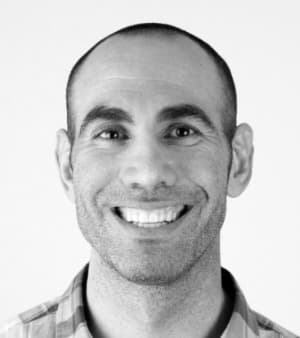 Alan Gordon, LCSW, is the founder and executive director of the Pain Psychology Center, where he oversees a team of forty therapists. Gordon developed Pain Reprocessing Therapy (PRT), a cutting-edge protocol for treating chronic pain, and just completed a groundbreaking neuroimaging study on the efficacy of PRT in conjunction with the University of Colorado-Boulder. He was featured on CBS’s The Doctors, where he conducted the first fMRI case study of a patient eliminating chronic pain. He is the co-author of The Way Out: A Revolutionary, Scientifically Proven Approach to Healing Chronic Pain.
Alan Gordon, LCSW, is the founder and executive director of the Pain Psychology Center, where he oversees a team of forty therapists. Gordon developed Pain Reprocessing Therapy (PRT), a cutting-edge protocol for treating chronic pain, and just completed a groundbreaking neuroimaging study on the efficacy of PRT in conjunction with the University of Colorado-Boulder. He was featured on CBS’s The Doctors, where he conducted the first fMRI case study of a patient eliminating chronic pain. He is the co-author of The Way Out: A Revolutionary, Scientifically Proven Approach to Healing Chronic Pain. 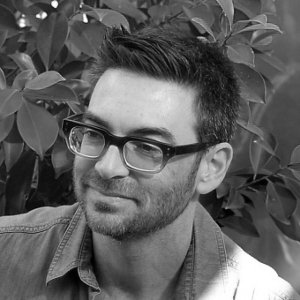 Alon Ziv has a degree in neuroscience and was awarded the Certificate of Distinction in Teaching in Biology from UCLA. He is the author of Breeding Between the Lines, co-author of The Way Out: A Revolutionary, Scientifically Proven Approach to Healing Chronic Pain, and has appeared on the BBC London Evening News, NPR, BBC Radio, and local radio across the United States.
Alon Ziv has a degree in neuroscience and was awarded the Certificate of Distinction in Teaching in Biology from UCLA. He is the author of Breeding Between the Lines, co-author of The Way Out: A Revolutionary, Scientifically Proven Approach to Healing Chronic Pain, and has appeared on the BBC London Evening News, NPR, BBC Radio, and local radio across the United States.
Skillful Means: Lectio Divina / Holy Reading / Scriptural Meditation
Your Skillful Means, sponsored by the Wellspring Institute, is designed to be a comprehensive resource for people interested in personal growth, overcoming inner obstacles, being helpful to others, and expanding consciousness. It includes instructions in everything from common psychological tools for dealing with negative self talk, to physical exercises for opening the body and clearing the mind, to meditation techniques for clarifying inner experience and connecting to deeper aspects of awareness, and much more.
Lectio Divina / Holy Reading / Scriptural Meditation
PURPOSE/EFFECTS
For many people, “holy reading” generates a distinct feeling of being connected with God, being blessed, and feeling loved.
It will also promote relaxation, wellbeing, and groundedness.
Although the term lectio divina (“holy reading”) comes from the Christian tradition, the practice can be done with any text that you feel is sacred, holy, or profound.
METHOD
Summary
Read a section of holy scripture. Then think about it deeply, pray on it, and, finally, meditate on God.
Long Version
Perspectives on Self-Care
Be careful with all self-help methods (including those presented in this Bulletin), which are no substitute for working with a licensed healthcare practitioner. People vary, and what works for someone else may not be a good fit for you. When you try something, start slowly and carefully, and stop immediately if it feels bad or makes things worse.
- Before beginning this practice, choose a scripture from which to read, and decide upon a small section or passage (a page or less) from the scripture.
- Next, prepare the reading space. It should be comfortable, clean, and free from all dis-tractions.
- Now prepare yourself by closing your eyes and getting centered and still.
- Holy reading of the scriptural passage is traditionally done in four steps, which have Lat-in names.
- Lectio (reading) – Read the passage slowly and carefully several times. You may do this aloud or silently. You may wish to make notes of anything that particularly captures your attention or seems significant.
- Meditatio (thinking about) – Think about the text in a deep way, opening your mind to any nuances. You may wish to actually visual-ize any scenes in the text, or to write notes about your understanding of it. Traditionally, during this step the Holy Spirit is thought to help aid in scriptural understanding.
- Oratio (praying) – Open your heart to God. Imagine that you and God are conversing about the passage, its meaning, and what it means for you. Allow intuition and “the small voice within” to partici-pate. Your intellectual mind is of no use here.
- Contemplatio (meditating) – Now let go of all words, and sit in silent commun-ion with Go
- Typically, lectio divina requires about an hour.
HISTORY
Lectio Divina has a long and venerable history in the Christian Church. Holy reading is considered (according to the rules of Pachomius, Augustine, Basil, and Benedict) to be one of the three bases of monastic life. (The other two are labor and liturgy.)
In 2005, Pope Benedict talked about lectio divina, saying:
“I would like in particular to recall and recommend the ancient tradition of Lectio divina: the diligent reading of Sacred Scripture accompanied by prayer brings about that intimate dialogue in which the person reading hears God who is speaking, and in praying, responds to him with trusting openness of heart. If it is effectively promoted, this practice will bring to the Church - I am convinced of it - a new spiritual springtime.”
Although it goes by many other names, the practice of holy reading is done in virtually every tradition that has scriptures.
NOTES
If you are an atheist, try doing this meditation with a copy of Philosophiæ Naturalis Principia Mathematica, or something with similar import.
You may notice that the Latin terms for meditation and contemplation mean exactly the opposite of their English cognates. In Latin, meditatio means “contemplation,” and contemplatio means “meditation.” Strange!
SEE ALSO
What Is Meditation? Meditation Posture
Fare Well
May you and all beings be happy, loving, and wise.
The Wellspring Institute
For Neuroscience and Contemplative Wisdom
The Institute is a 501c3 non-profit corporation, and it publishes the Wise Brain Bulletin. The Wellspring Institute gathers, organizes, and freely offers information and methods – supported by brain science and the contemplative disciplines – for greater happiness, love, effectiveness, and wisdom. For more information about the Institute, please go to http://www.wisebrain.org/wellspring-institute.
If you enjoy receiving the Wise Brain Bulletin, please consider making a tax-deductible donation to the Wellspring Institute. Simply visit WiseBrain.org and click on the Donate button. We thank you.

